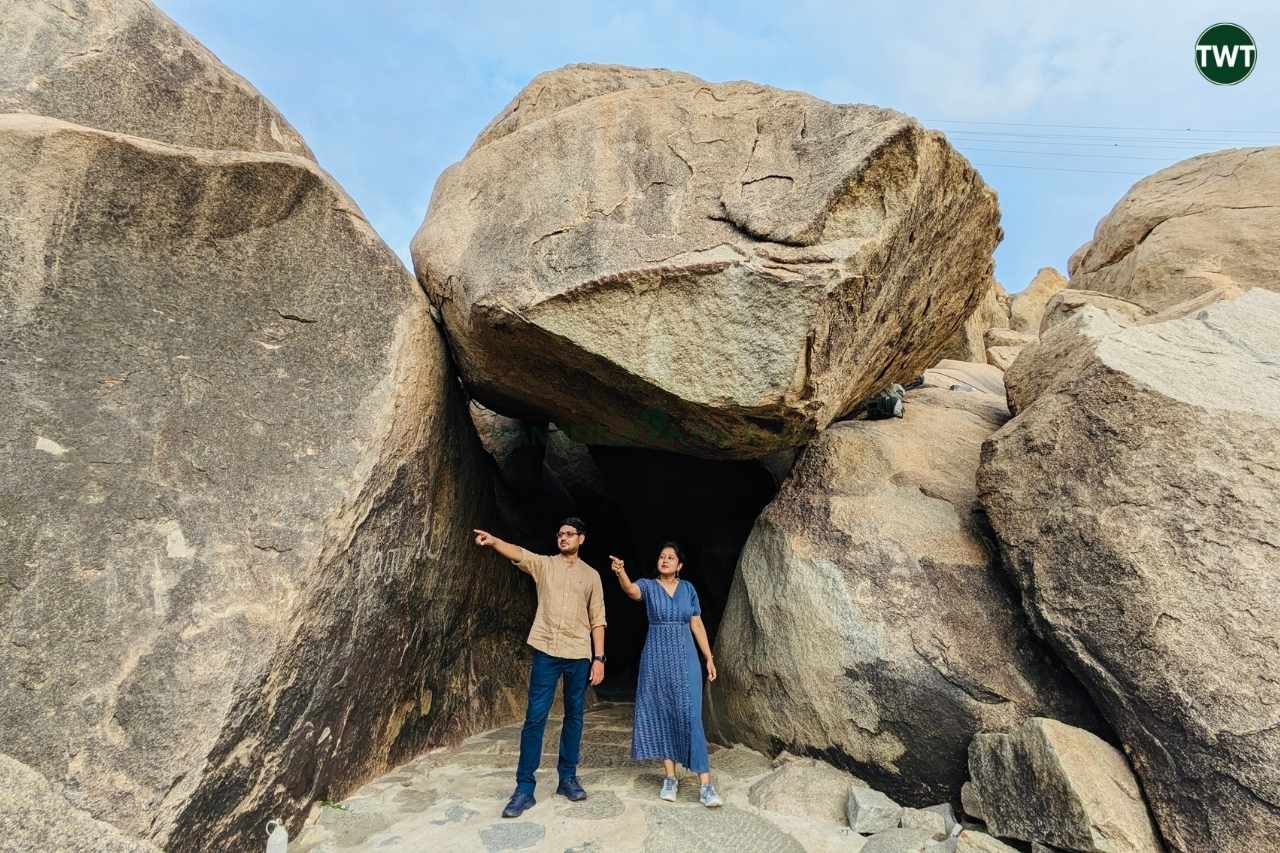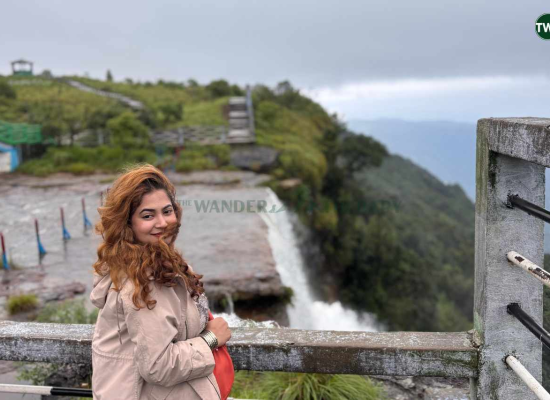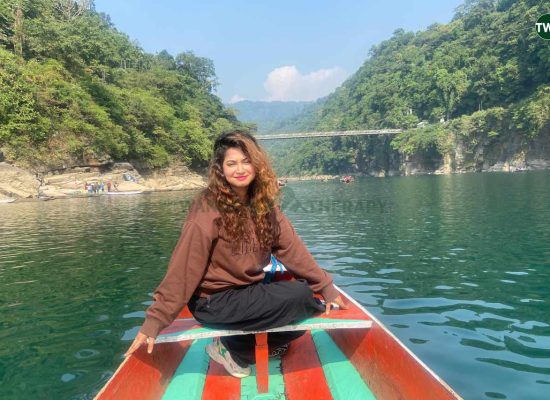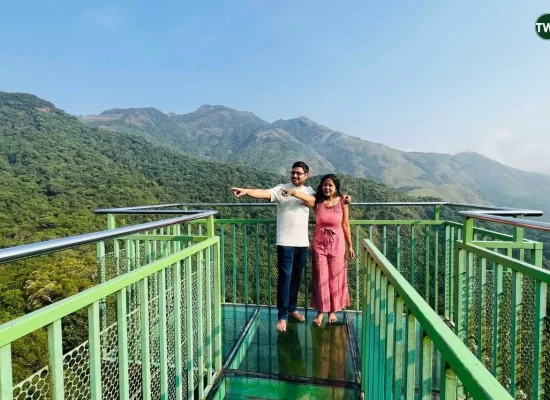Disclaimer: We are serious about content integrity and staying true to our readers. Thus, you can be assured that any article you read across our website is free of bias and is not produced by AI-platforms. Also, this post contains a few affiliate links. If you click on them to make a purchase, we may earn a small commission at no extra cost to you. Read about our editorial policies.
It was astonishing to witness how a destroyed city could still look so inexplicably beautiful. As we walked through the remains of Hampi’s ancient city, we couldn’t resist admiring its complex intricacy, created by the royal craftsmen.
The exquisiteness of the town’s Dravidian architecture can truly leave you awestruck! Once the glorious capital of Vijayanagara empire, Hampi was the world’s second largest city in the 14th century.
Today, it can safely be called one of the offbeat destinations in Karnataka (south India). I say this, because none of the tourist spots we visited were overly crowded, unlike what we expected. There were no hawkers forcing you to purchase their goods, nor were there large queues of people pushing you to get ahead. Luckily, this gave us the chance to explore the UNESCO World Heritage Site in a relaxed manner.
In this article, I will take you on a detailed virtual tour of Hampi, a class apart from your usual popular tourist places. We’ll talk about the must-visit spots, stay options, helpful travel tips, top things to do in Hampi and more. Let’s start with the intriguing history of the place?
Contents
Brief History Of Hampi
Hampi’s history can majorly be divided into two parts – the first one being the stories of Kishkinda, as depicted in Hindu mythological epic Ramayana. As per folklore, Sugriva stayed in Hampi’s Matanga Hill with Lord Hanuman after his fight with brother Bali. It was here that lord Rama came across the monkey kingdom and sought their help in finding his wife, goddess Sita. Even today, you will be intrigued to see a huge army of monkeys around the temples of Hampi.
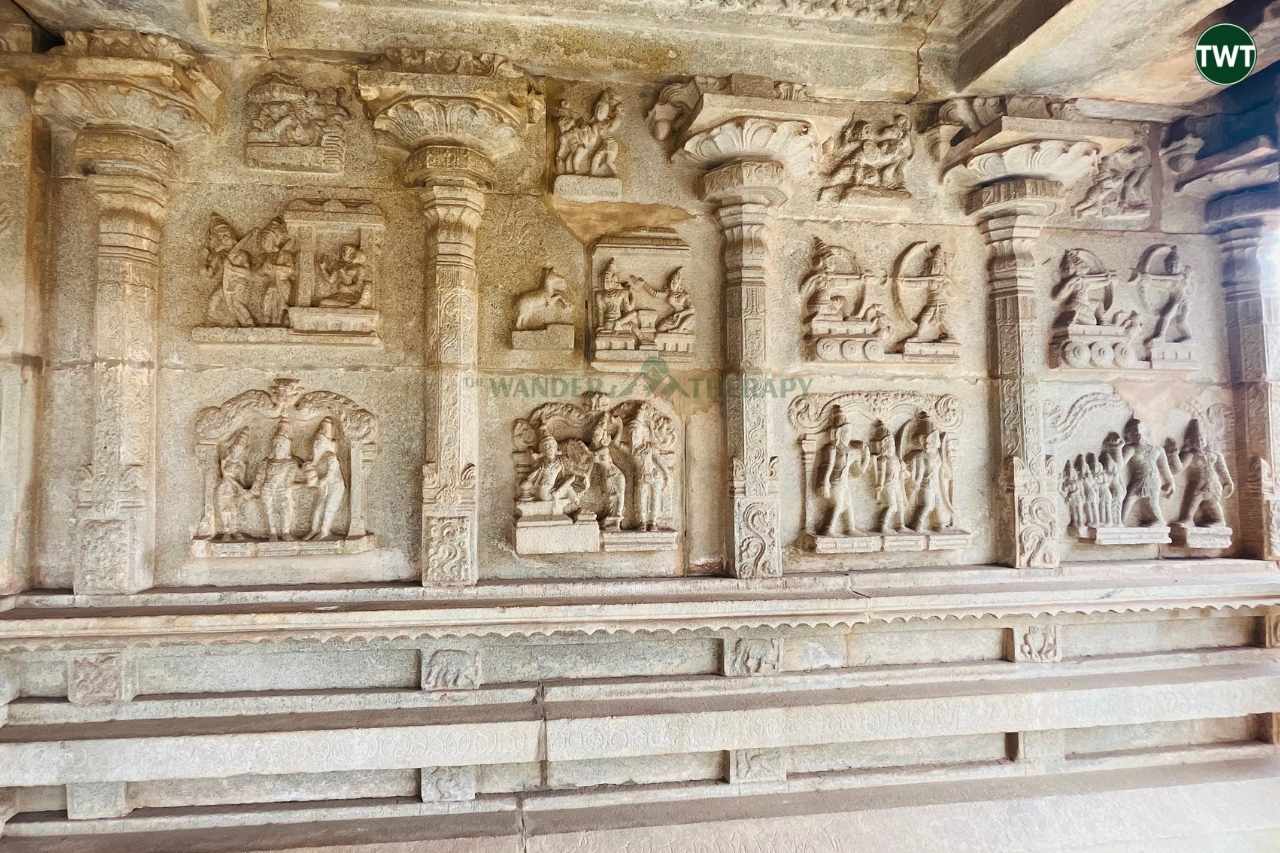
The second part of its history is dominated by the Vijayanagara kingdom, which flourished here between 1300 and 1600 AD. Established by Deva Raya (Hakka) and Bukka Raya, the dynasty reached its most powerful phase during the rule of Krishna Deva Raya. This is when most of the grand palaces and temples of Hampi were built. Hindu culture, arts and craftsmanship emerged like never before.
Our tour guide, Mr. Mallesh, informed us that diamonds and several precious gems used to be sold openly in the markets of Hampi. Such was the wealth and splendor of the kingdom, which attracted travelers from around the world once upon a time.
Unfortunately, the city and its many monuments were eventually destroyed by the Deccan rulers for over six months before being abandoned. Today, Hampi is famously called the “World’s Largest Open-air Museum” and is home to the remains of around 1600 monuments.
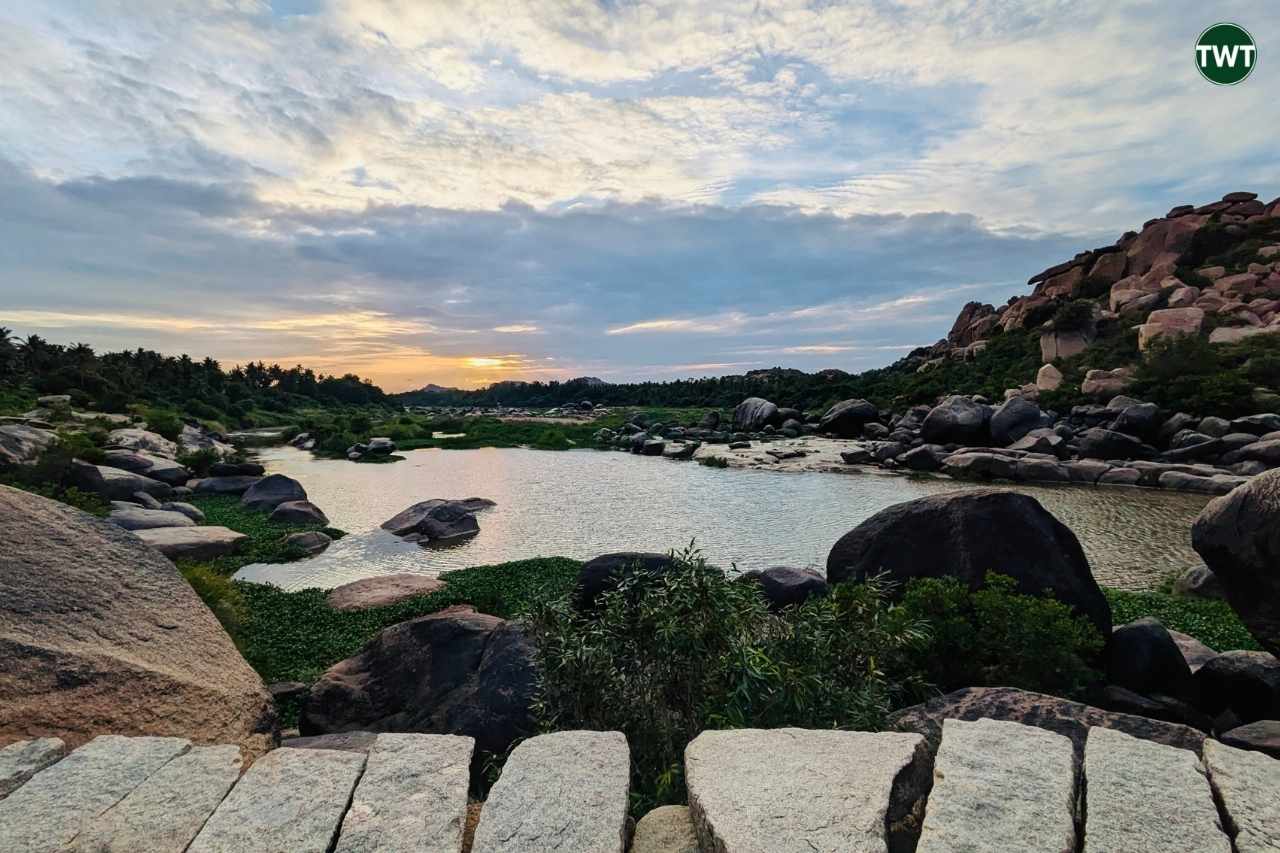
TWT Tip: We highly recommend exploring Hampi with a government-assigned guide, as they can give you some precious and rare insights, making your trip all the more intriguing and memorable. Our guide, Mr. Mallesh shared very interesting stories and history of each place, while also showing us some hidden gems of Hampi. You can contact him on 9945872653, if you wish to take him along for your Hampi sightseeing.
10 Must-Visit Places In Hampi
Spread across 29 square kilometers, the heritage town of Hampi includes centuries-old palaces, temples, stepwells, and more, surrounded by a boulder-strewn landscape and the Tungabhadra river. Here are some of the most significant and stunning places to visit in Hampi:
- Lotus Mahal
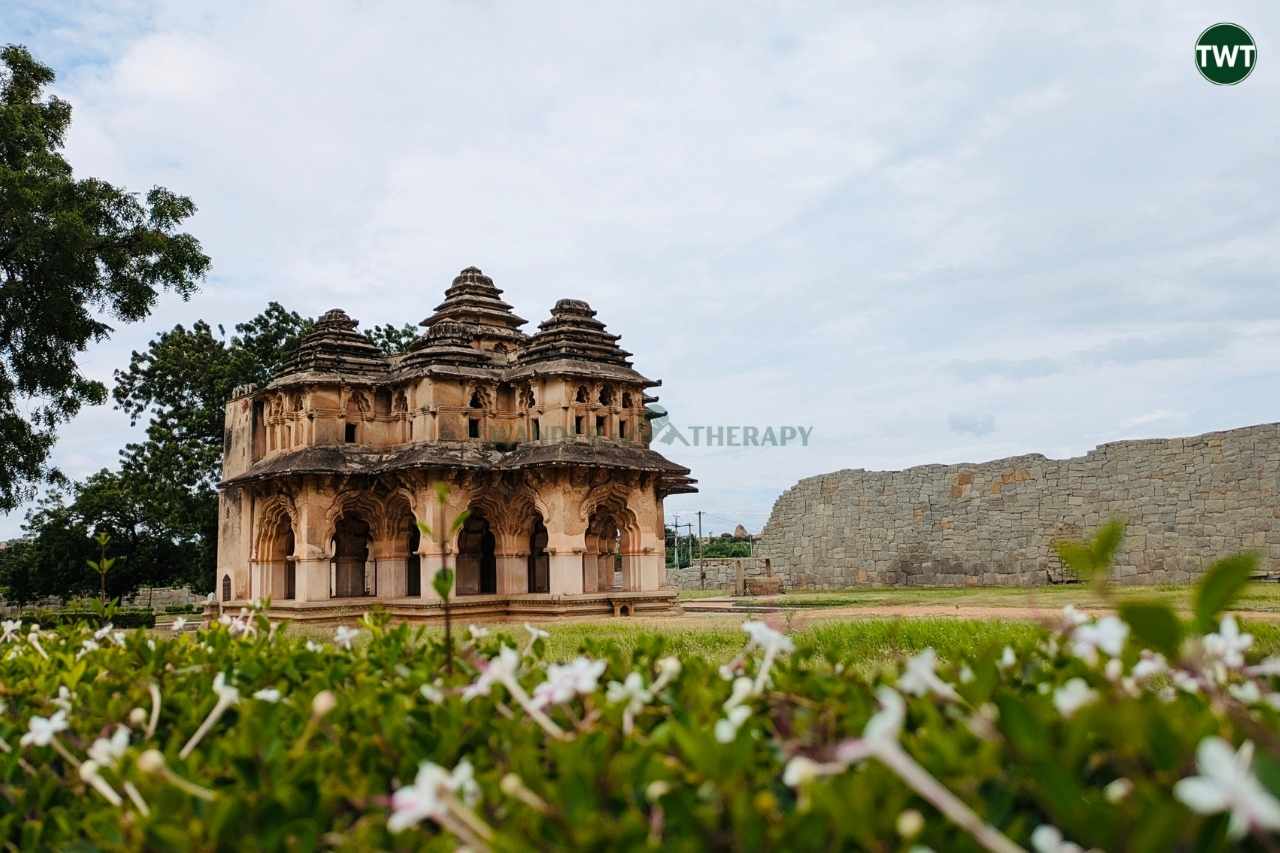
Located inside the tranquil Zenana enclosure, Lotus Mahal is believed to have been the residence of king Krishna Deva Raya’s wife. It was constructed with internal water pipes to ensure that the palace remains unaffected by the scorching heat of the region.
One of the most beautiful places to see in Hampi, Lotus Mahal features Indo-Islamic architecture, with several domes and archways carved in the shape of lotus buds. Locals assume that due to its Islamic design, Muslim invaders spared this monument when they were demolishing the other parts of Hampi.
Timings: 8 AM to 6 PM
Entry: Free
Required time: 30 minutes
Location: Google maps
View this post on Instagram
- Vijaya Vittala Temple
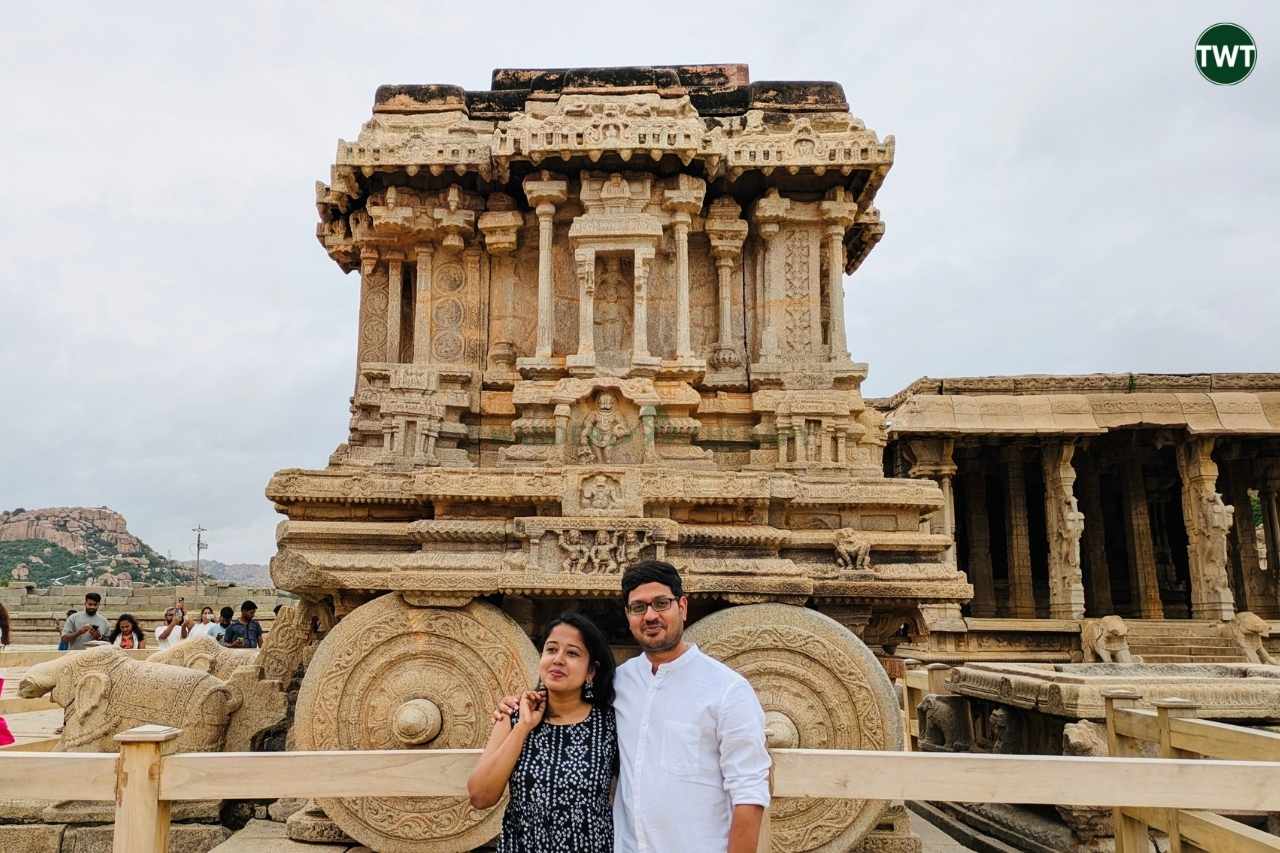
The most famous sightseeing place in Hampi, Vijaya Vittala Temple is where you will find the iconic stone chariot, which features on the 50 rupees note of Indian currency. Created in the 16th century, the gorgeous chariot features exquisite carvings of elephants and mythological characters.
It is surrounded by the temple’s many ornamental structures — the main hall, wedding pavilion, ceremonial hall, stepwell, and three elaborate gates featuring Dravidian architectural style.
The Vijaya Vittala Temple is located almost a kilometer away from its entry gate. In order to reach the temple, you will need to purchase a ticket and wait in a queue for the official buggies, which take tourists to the temple. The buggies are available for returning as well.
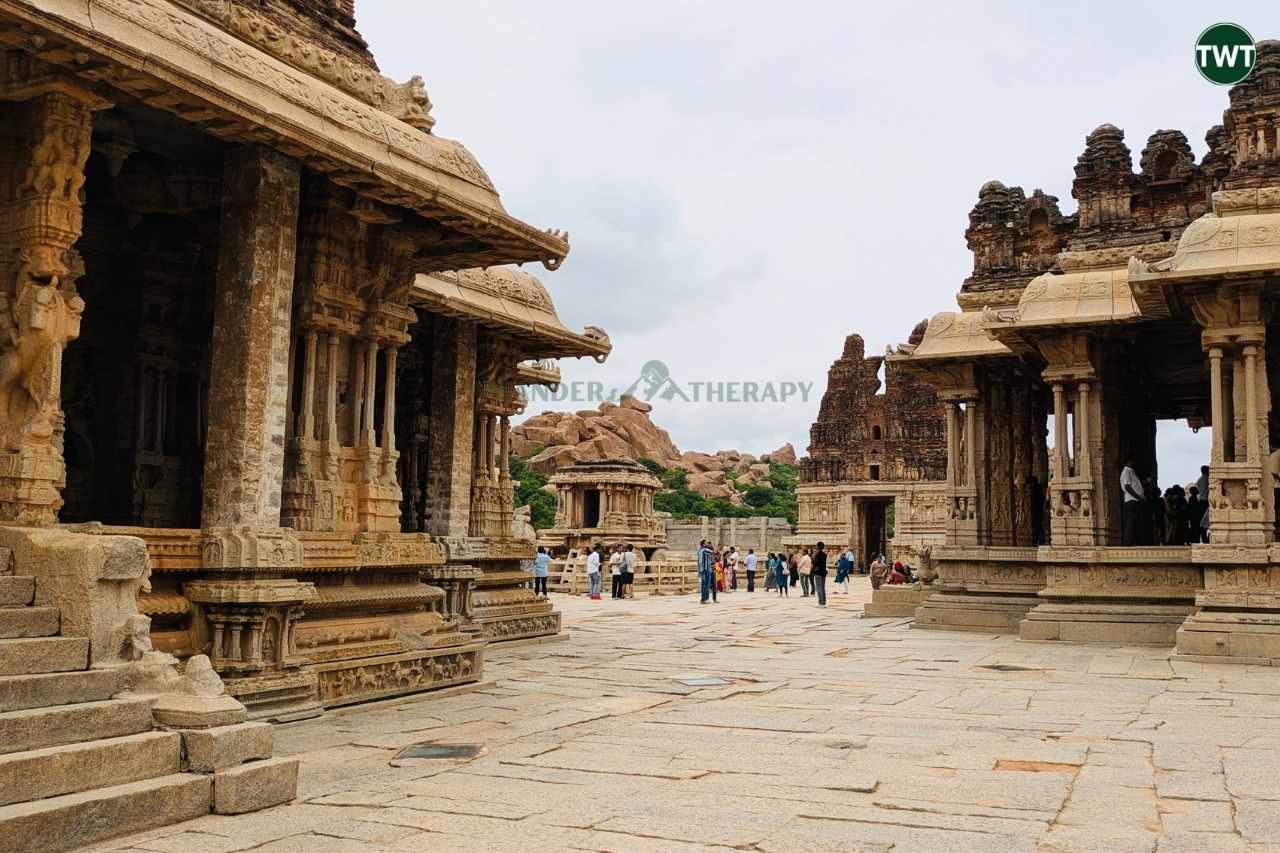
Alternatively, you can also walk to the temple, instead of opting for the buggy ride. The journey from the entry gate to the temple is equally beautiful, with the bouldered landscape of Hampi in full sight.
Did you know?
The Vijaya Vittala Temple features 56 intricate pillars that can emit 81 types of musical notes upon tapping. However, tourists are no longer allowed to touch them. Also, you will not find any priest or god’s idol at the sanctum of the temple, as several parts of the temple were ruined during the downfall of Vijayanagara empire.
Timings: 8:30 AM to 5:30 PM
Entry: INR 40 for Indians; INR 600 for foreign tourists; Free for kids aged below 15 years
Required time: 1.5-2 hours
Location: Google maps
TWT Tip: Terrified of using public washrooms? Both Lotus Mahal and Vijaya Vittala Temple had very clean and hygienic washrooms when we visited, unlike most tourist places, making it extremely convenient for tourists. In fact, we were quite surprised to see how the staff has been maintaining the premises.
- Virupaksha Temple
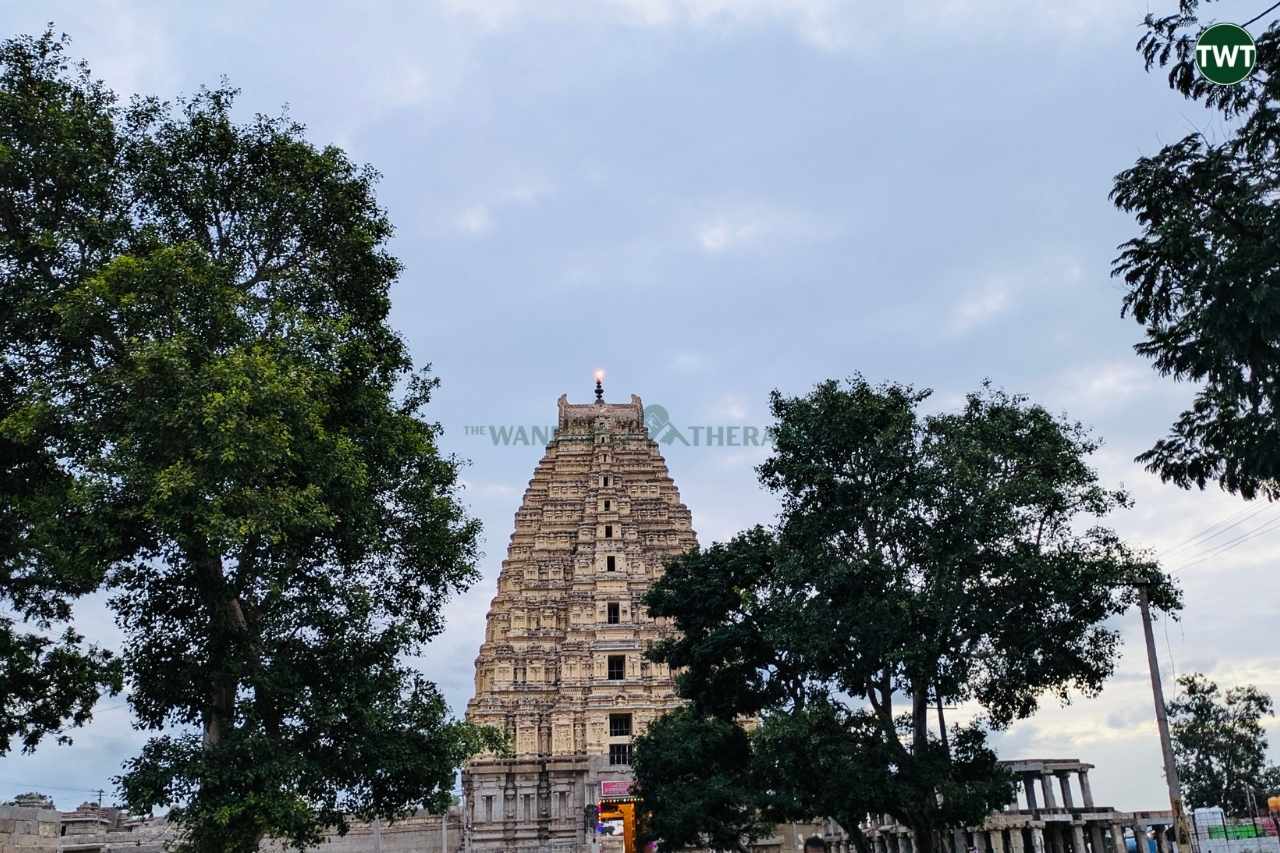
This is the only Hampi temple that was not destroyed by invaders and prayers are offered at the sanctum even today. Virupaksha Temple is dedicated to Lord Shiva and has been present from the 7th century! Later, in the 15th century, the main gopura (tower) and surrounding structures were built.
Situated opposite the Hampi bazaar, the temple attracts numerous devotees on auspicious occasions and on an everyday basis. However, even if you’re not a devotee, you will find yourself marveling at the elaborate paintings on the ceiling and craftsmanship on the gopuras, which feature stunning carvings of mythological deities.
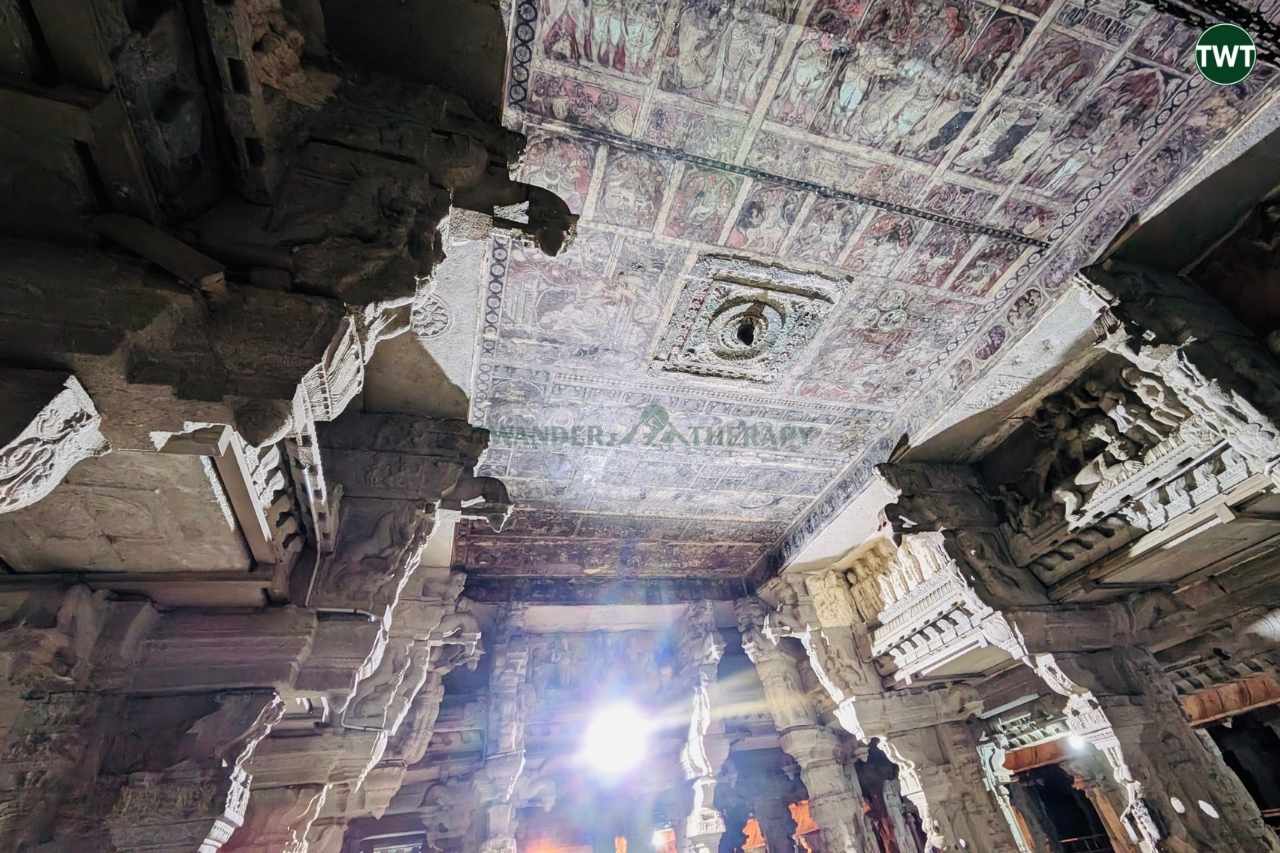
Timings: 6 AM-1 PM & 5 PM-9 PM
Entry: Free
Required time: 30 minutes
Location: Google maps
TWT’s Call For Change: The Virupaksha Temple has a captive elephant called Lakshmi, who is being used to collect money from devotees, in exchange for her blessings. She was even being spanked by her mahout occasionally. It is our sincere appeal to the Karnataka government and Ballari district authorities to release Lakshmi from such activities and let her live freely in the forest. We also kindly request visitors to not encourage such acts.
View this post on Instagram
- Matanga Hill
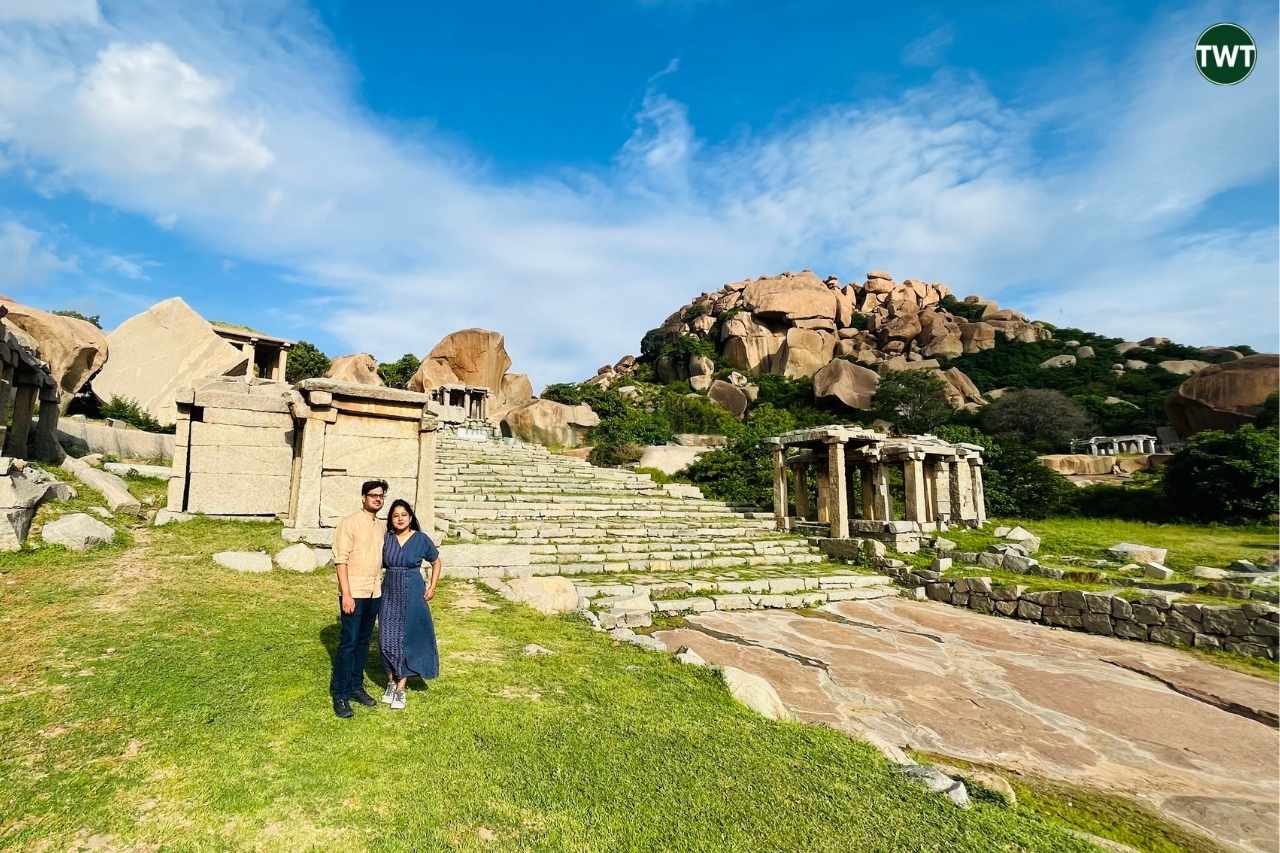
You simply can’t miss visiting this place in Hampi, if you wish to witness the stunning boulders of the town juxtaposed with its historical structures. Matanga Hill offers an easy to medium level trek for those who wish to explore its surroundings or climb to the top of the hill.
It overlooks several significant spots of Hampi that you can cover when you’re here. The trail starts from:
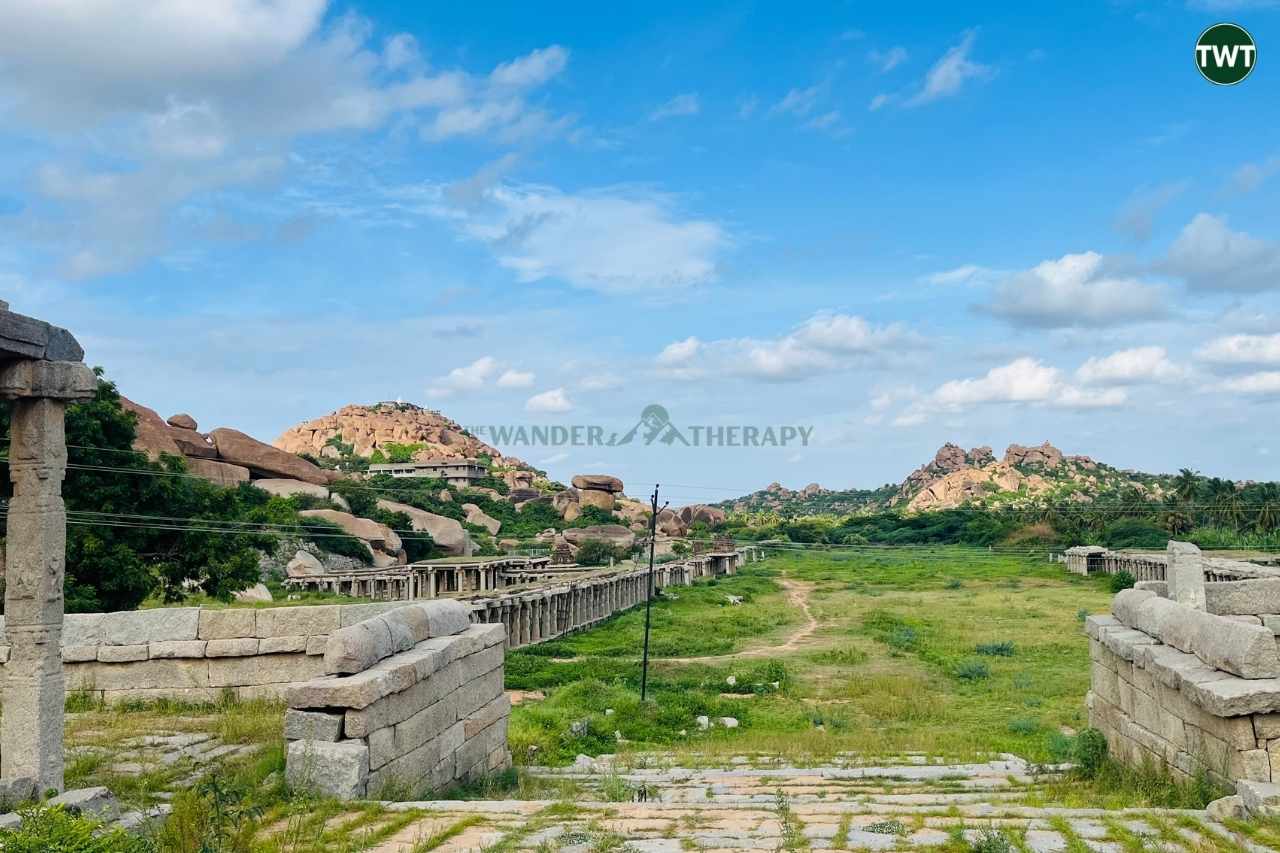
- Hampi Bazaar – As soon as you reach here, you will find the ruins of this ancient bazaar that was once a thriving market during the Vijayanagara era. It is located right opposite the Virupaksha Temple.
- Nandi sculpture – When you walk ahead, you will see a large monolithic stone sculpture of a bull, which fascinatingly faces the Virupaksha Temple.
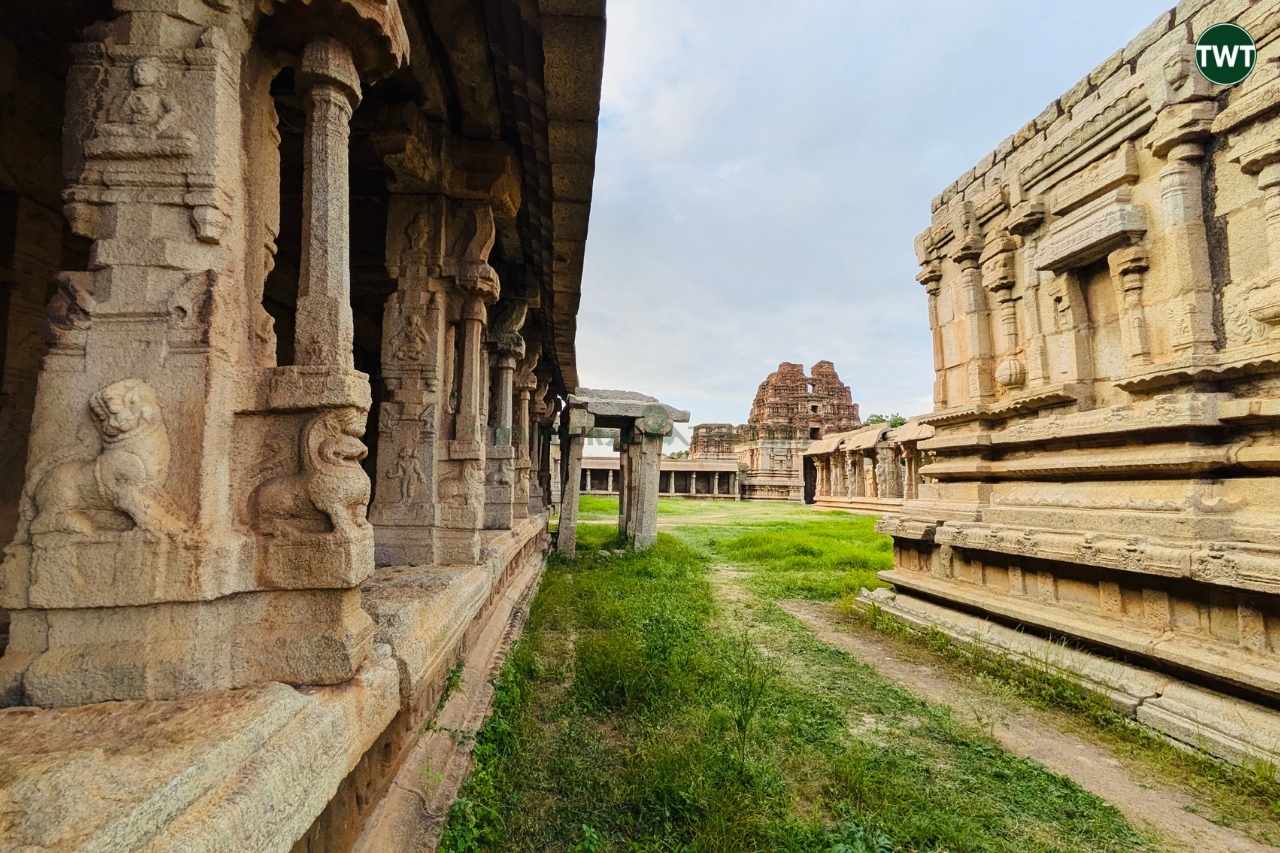
- Achyutaraya Temple – Next to the Nandi sculpture, a flight of steps combined with a few boulders leads to the gorgeous remains of the Achyutaraya Temple, built in the 15th century. An offbeat and hidden gem of Hampi, the temple features breathtaking architecture, a sprawling courtyard and intricately-carved pillars and roofs.
- Pushkarini – As you walk further, you will come across a remarkable stepped tank, which has now dried up. However, it’s worth a stop, just to admire the stepwell created with a series of interspersed stones, with a stone mantapa (pavilion) in the center. It is surrounded by carved pillars, lush greenery and bouldered hills, making for a visual treat.
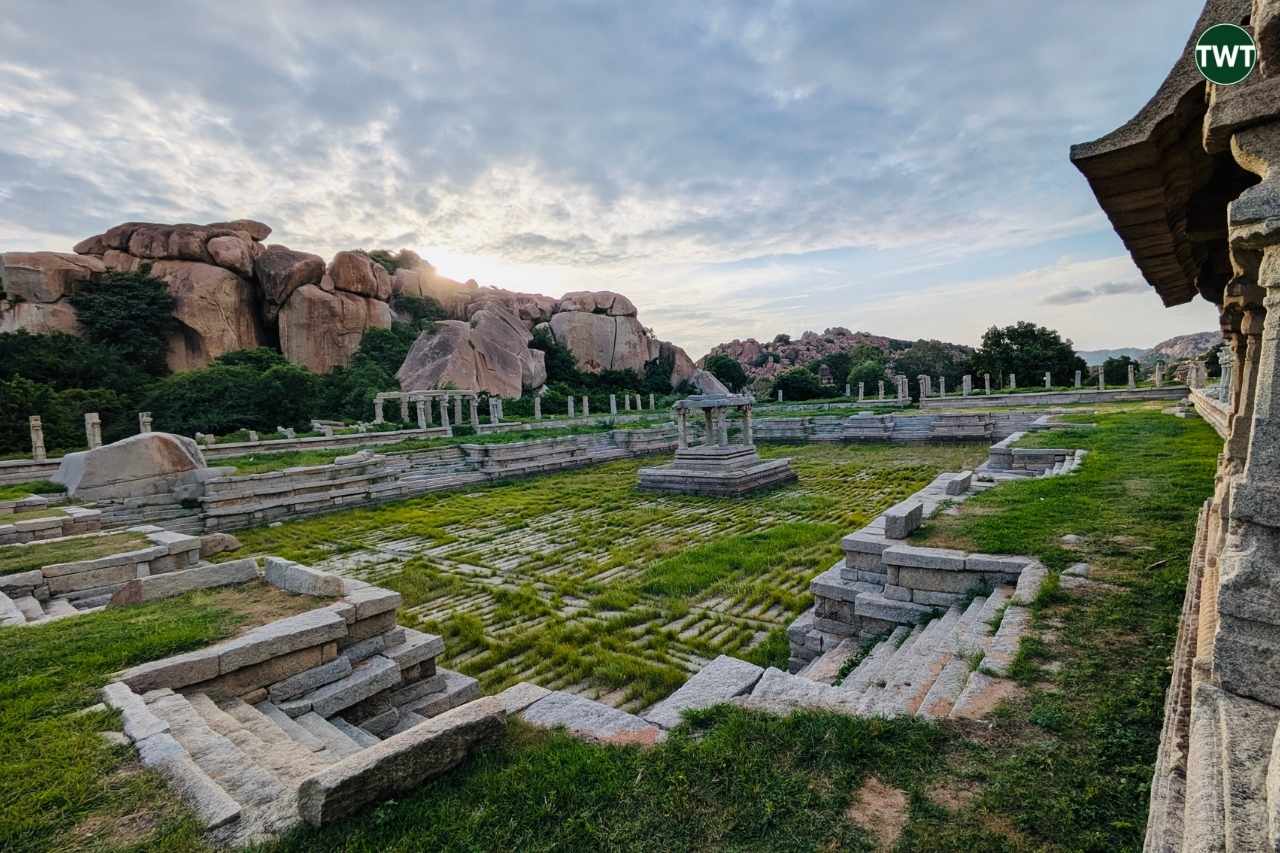
- Tungabhadra river bank (coracle ride) – The last point of this trail, before you exit to the car parking area through a cave, is one of the banks of the Tungabhadra river. Here, you can opt for a coracle ride, or simply sit and soak in the views of the shimmering river flanked by the hilly vistas.
Note: This trail leads to the left side of the hill through the Kampa Bhupa Path. You can also conclude it at the Vijaya Vittala Temple, if you walk further or go on a bicycle. When you take a right turn from Achyutaraya Temple, you can trek to the top of Matanga Hill, from where you can enjoy a beautiful sunrise or sunset. You can also visit the Kodanda Ram Temple and Veerabhadra Temple on these trails.
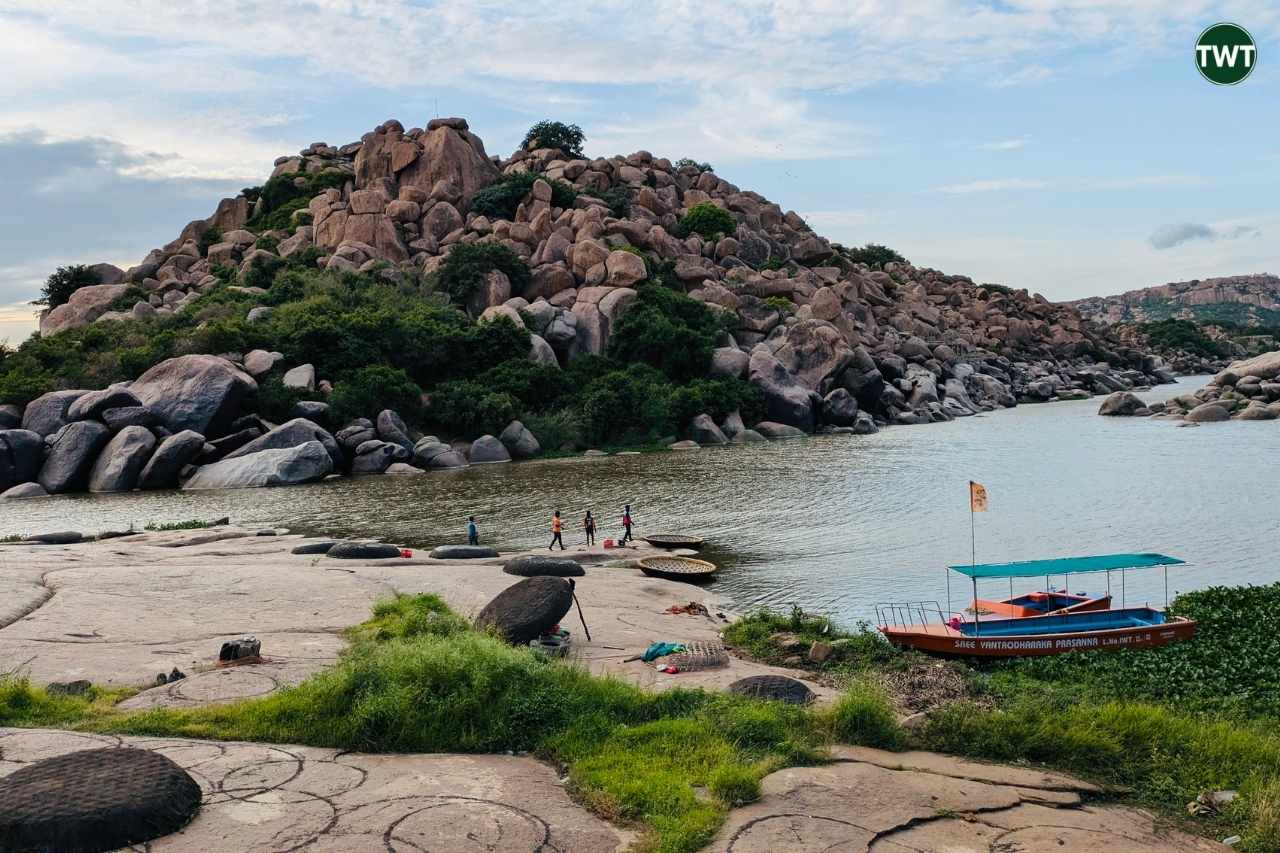
Timings: Sunrise to sunset
Entry: Free
Required time: 2-3 hours
Location: Google maps
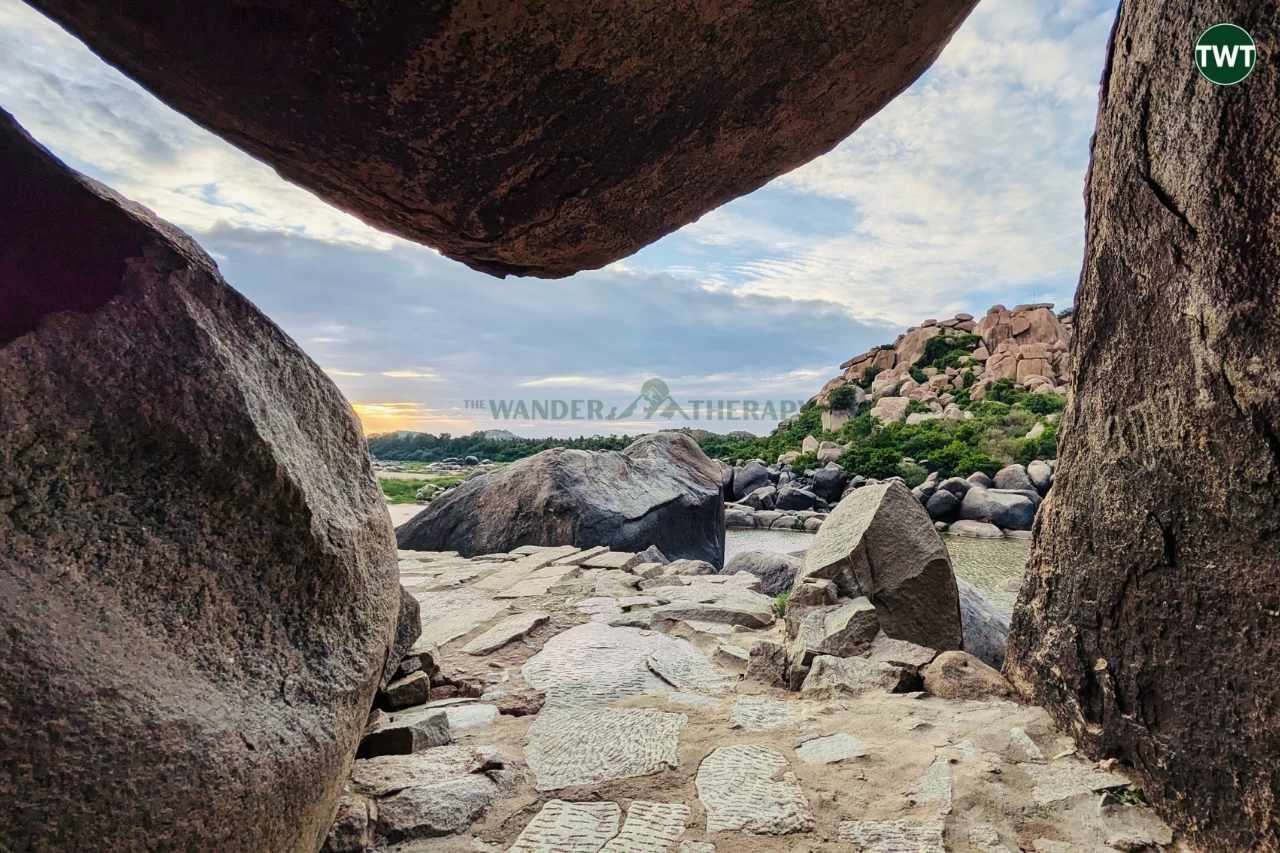
TWT Tip: The trail is almost an hour long, if you wish to cover all the important points. It also involves climbing on a few slippery rocks. Thus, we highly recommend that you carry a water bottle along with you and wear sturdy non-slippery shoes. Also check the weather conditions, before taking the coracle ride, especially if you’re visiting during the monsoon season.
View this post on Instagram
- Queen’s Bath
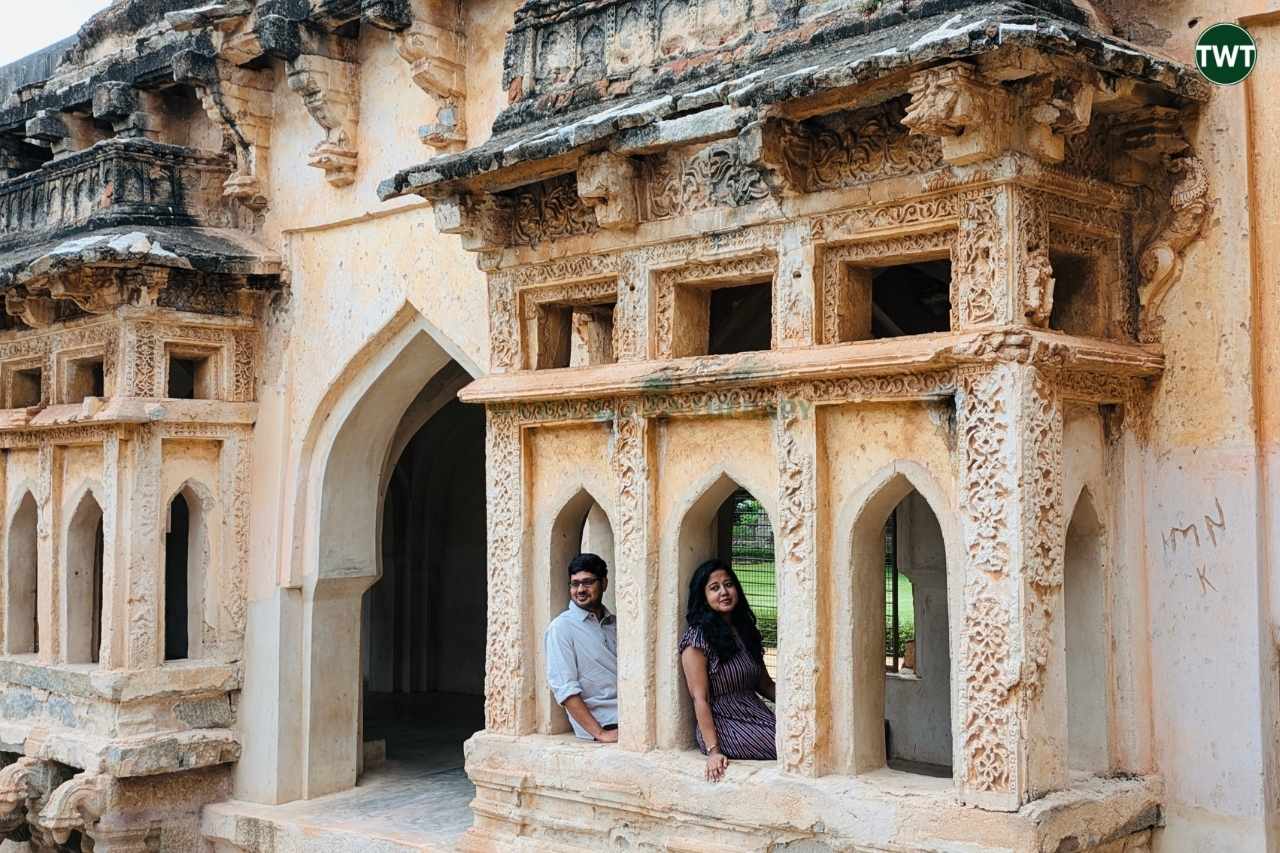
When you enter Queen’s Bath, it looks quite simple from the outside. But inside, it turns out to be incredibly ornate.
Situated close to the palace ruins, Queen’s Bath was the main private pool dedicated for the royal women. It features a 1.8 meter deep pool that is open to the sky. The pool is enveloped by exquisite balconies and serene corridors, created in the Indo-Islamic style.
Timings: 6 AM to 6 PM
Entry: Free
Required time: 30 minutes
Location: Google maps
- Royal Enclosure
The residence and main fort of the Vijayanagara rulers once upon a time, the Royal Enclosure is spread across 59,000 square meters. Though it lies in ruins today, here are the main structures that will leave you spellbound:
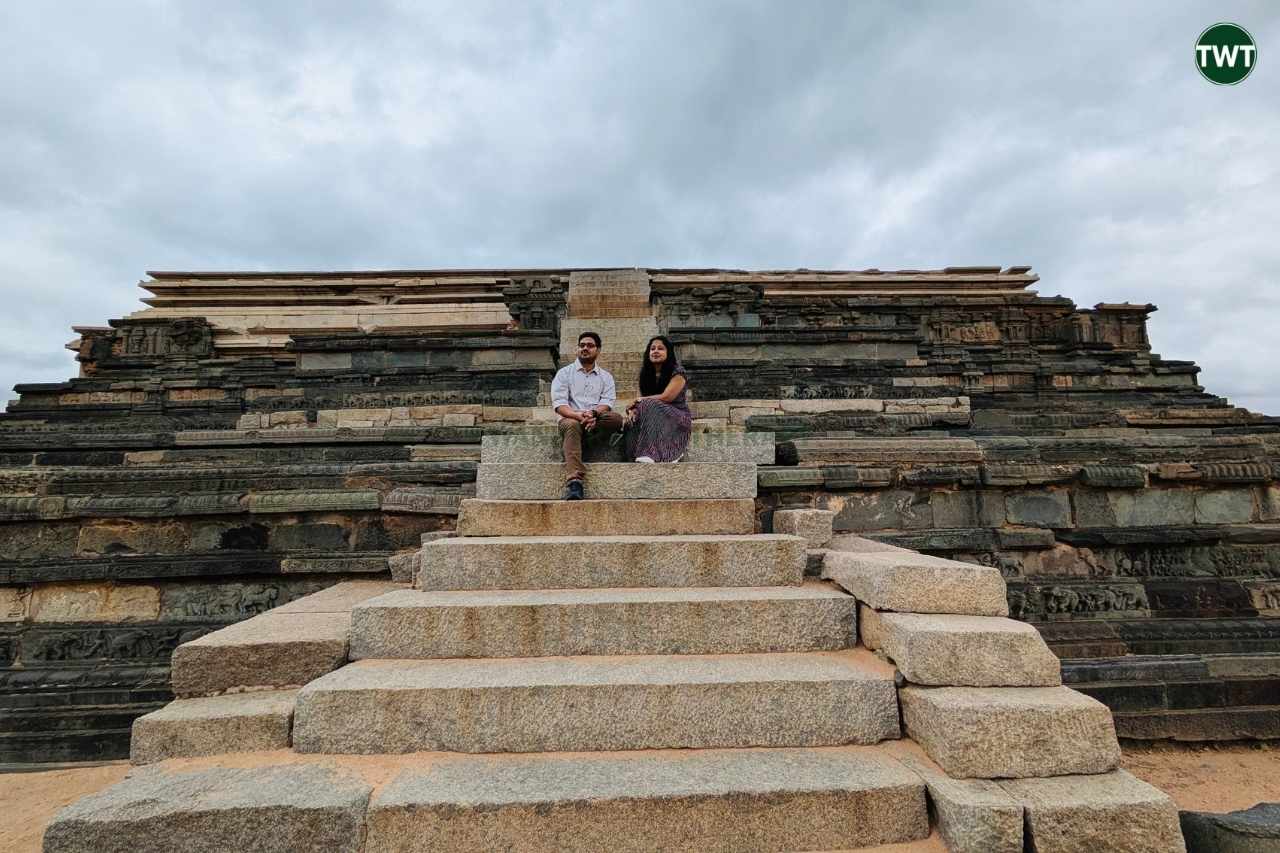
- Mahanavami Dibba – If you’ve watched the Indian blockbuster movie Baahubali, you will surely reminisce about it when you see this granite platform. Remember the grand multi-level throne where the king takes oath in front of his audience? Mahanavami Dibba is a very similar structure, but just less lustrous compared to the film’s set. The platform features incredible carvings of animals and cultural motifs in bas relief work. According to an information board placed by the Indian government near the ancient structure, the platform may have been topped by a pavilion before it was demolished.
- Underground Chambers – A very intriguing secret chamber, its narrow opening leads you underground through a dark tunnel, culminating at the central chamber. Constructed with green schist stone, it is believed that this structure could have been used as the royal treasury or shrine.
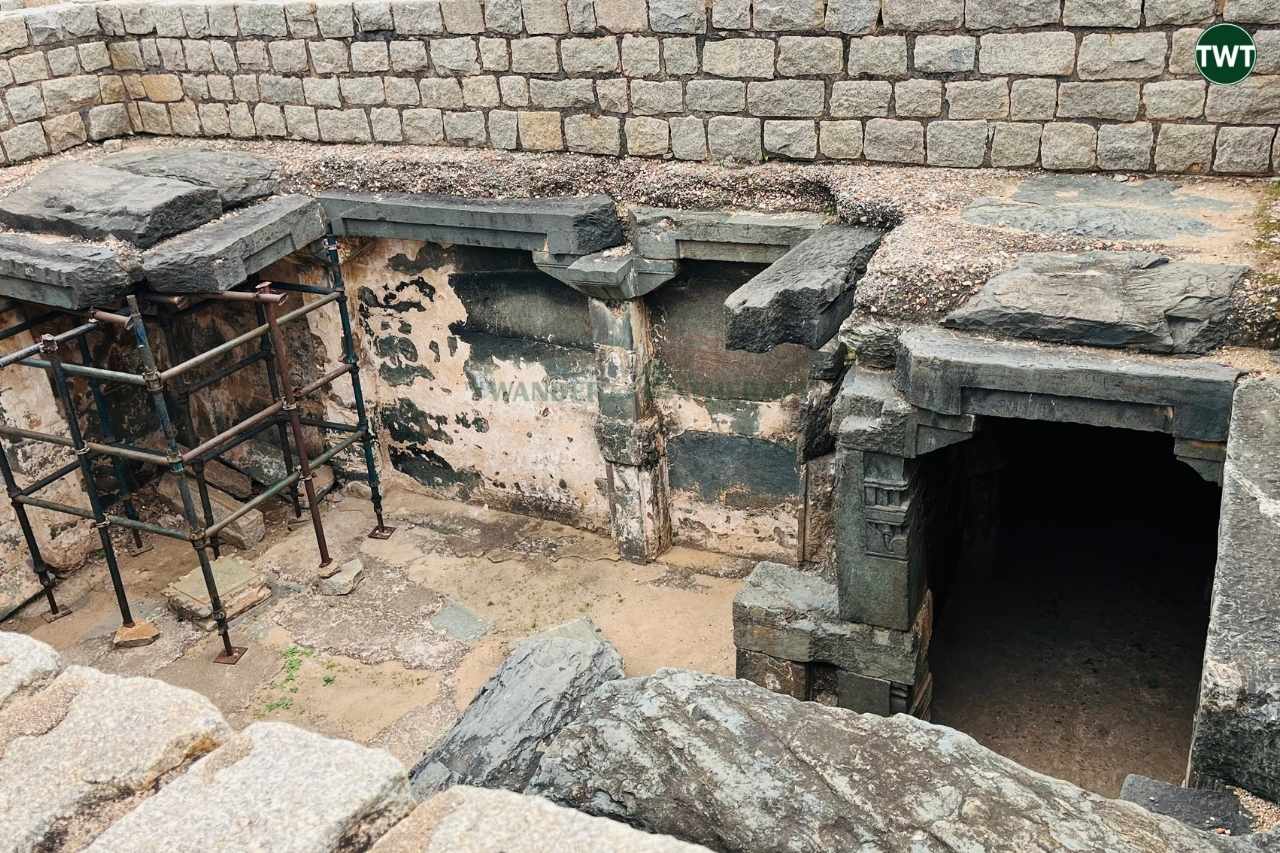
- Pushkarini (stepped tank) – Located close to Mahanavami Dibba, this stone stepwell will leave you awestruck. Its carefully carved symmetrical steps in various sizes come together to form a stunning structure –– a must-visit for photography enthusiasts.
- Other platforms – The royal enclosure comprises several other platforms believed to have been the bases of the king-queen’s palaces, audience hall and more. While the premises, surrounded by Hampi’s hills, makes for a visual treat, it can also be fascinating to visualize what the structures may have originally looked like.
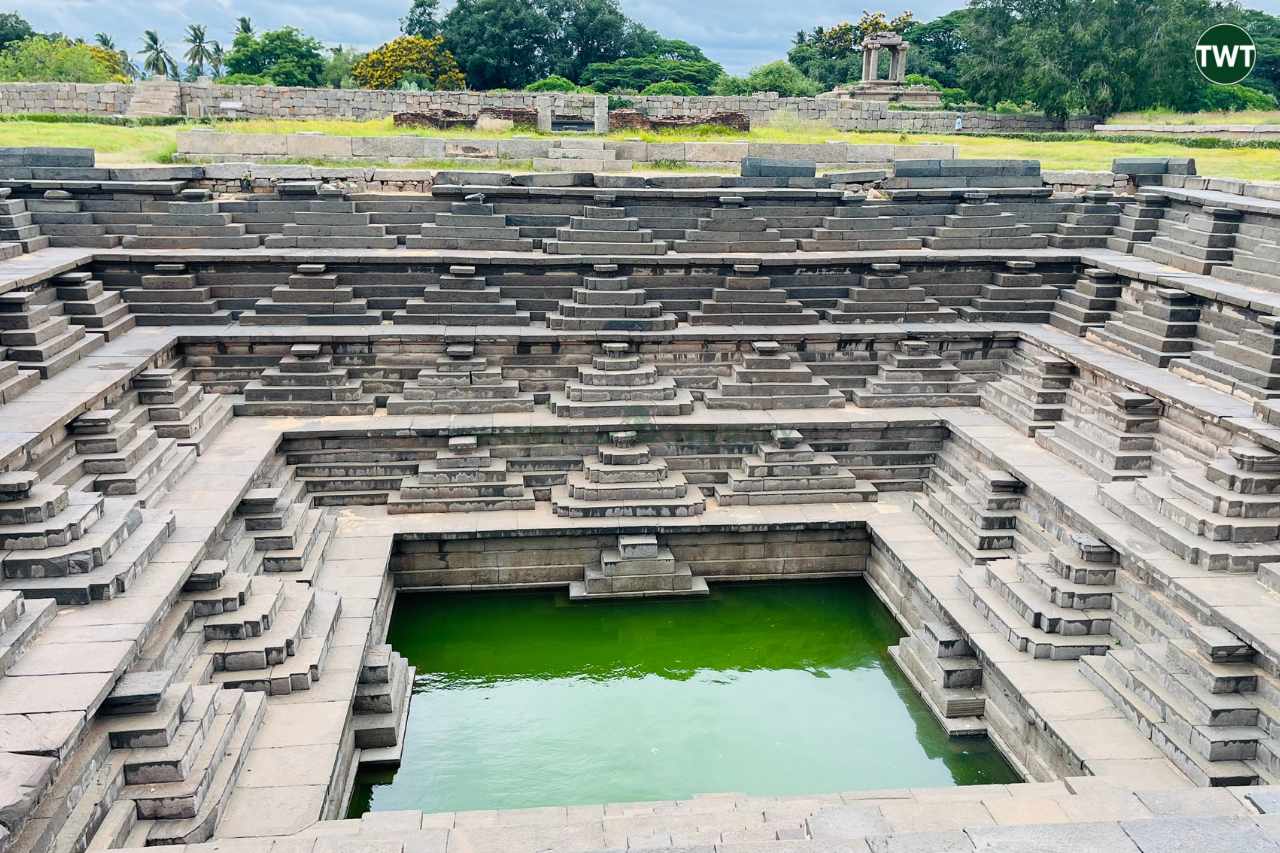
Timings: 6 AM to 6 PM
Entry: Free
Required time: 1.5-2 hours
Location: Google maps
TWT Trivia: Interestingly, our guide informed us that Baahubali director SS Rajamouli had visited Hampi’s royal enclosure ruins during the film’s recce. No wonder, we found such stark similarities between Mahanavami Dibba and the movie sets.

- Hazara Rama Temple
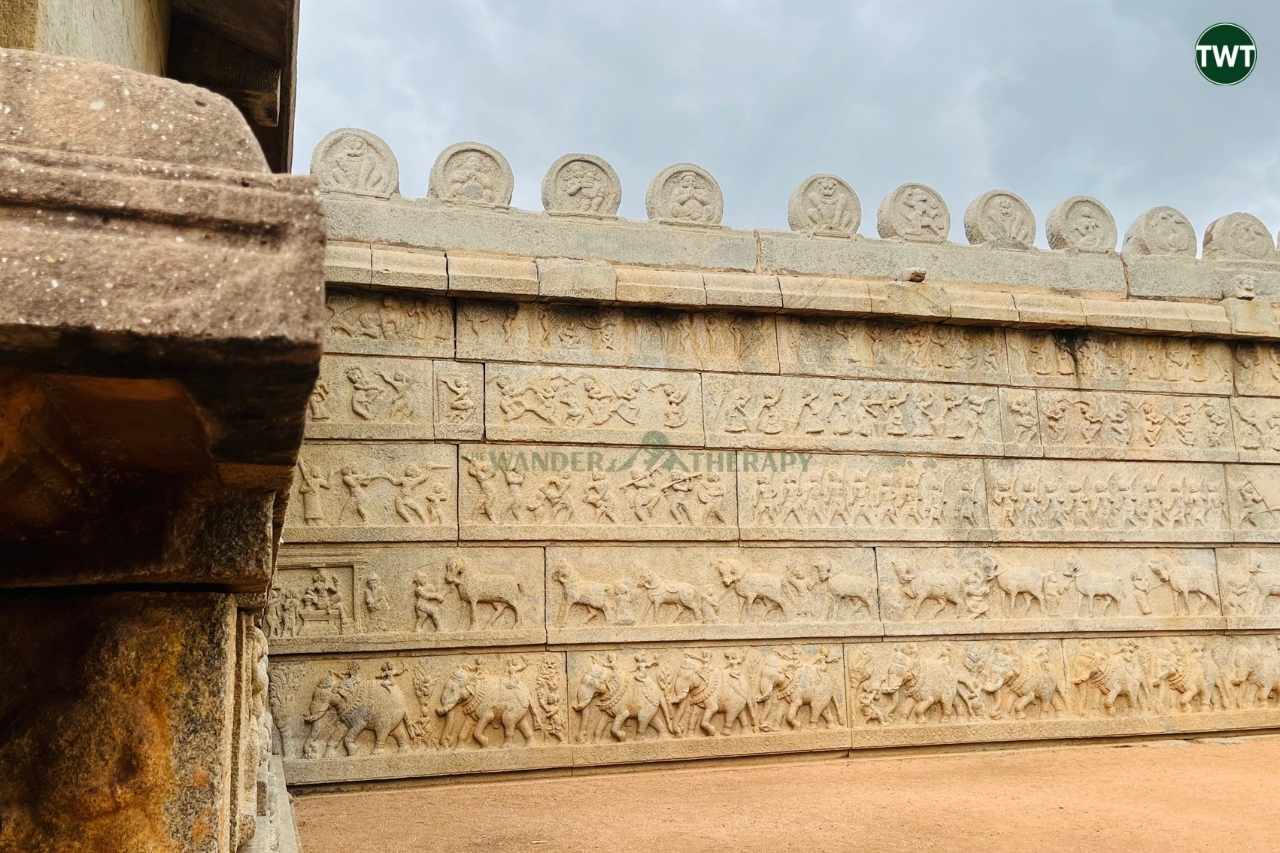
Imagine watching the intricate temple jewelry of south India come alive in the form of walls and pillars! The architectural embellishments on the Hazara Rama Temple can truly bewitch you.
We noticed that the outer walls mimic coin jewelry at the top level, and feature intricate bas relief work of royal processions on the bottom levels. Inside, the sanctum hall is adorned with carvings that narrate the entire story of Ramayana! Other noteworthy elements are the motifs of Vishnu avatars carved in polished black schist stone.
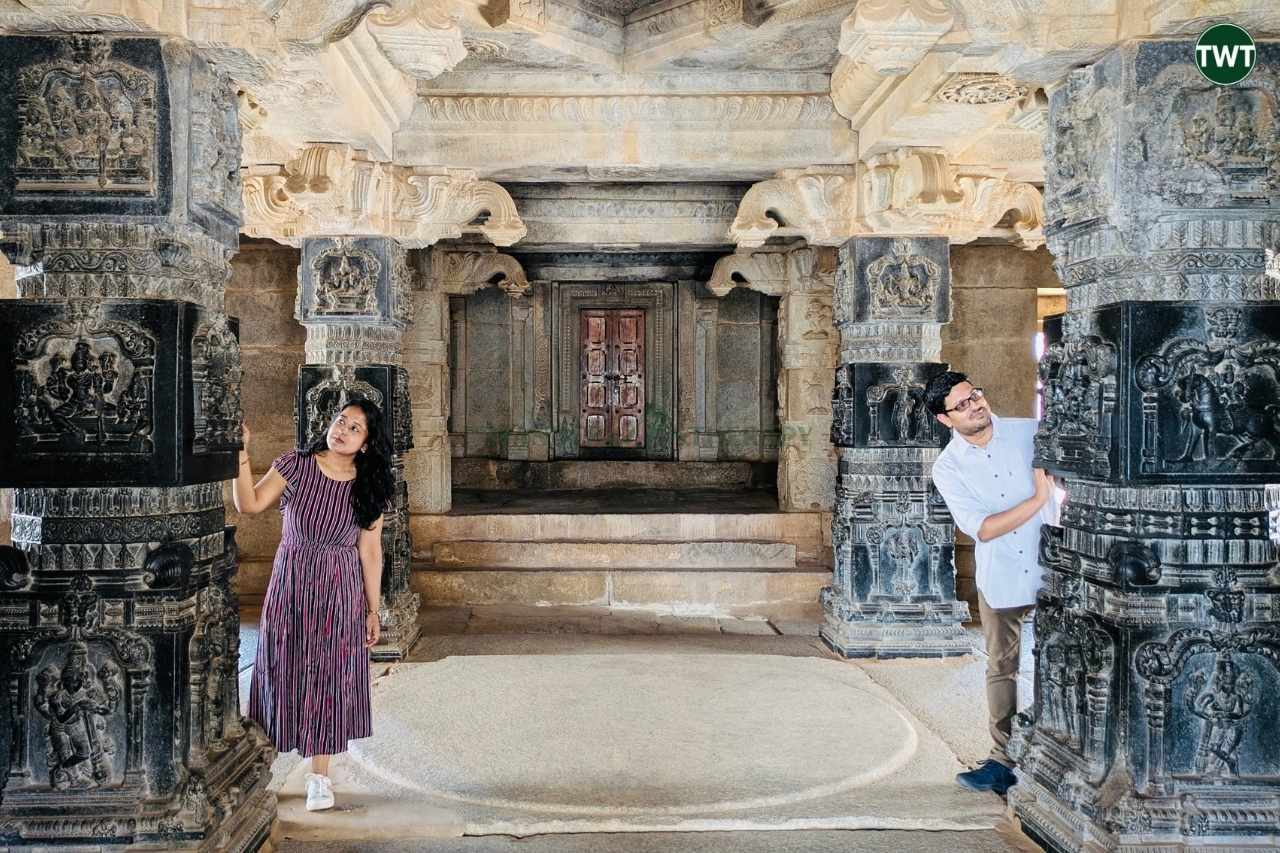
Throughout our tour, we found ourselves gaping at the artistic beauty and craftsmanship of this Hampi temple, which dates back to the 14th-15th century. It is not used for daily worship as it was pillaged during the war.
Timings: 6 AM to 6 PM
Entry: Free
Required time: 30 minutes
Location: Google maps
- Hemakuta Hill
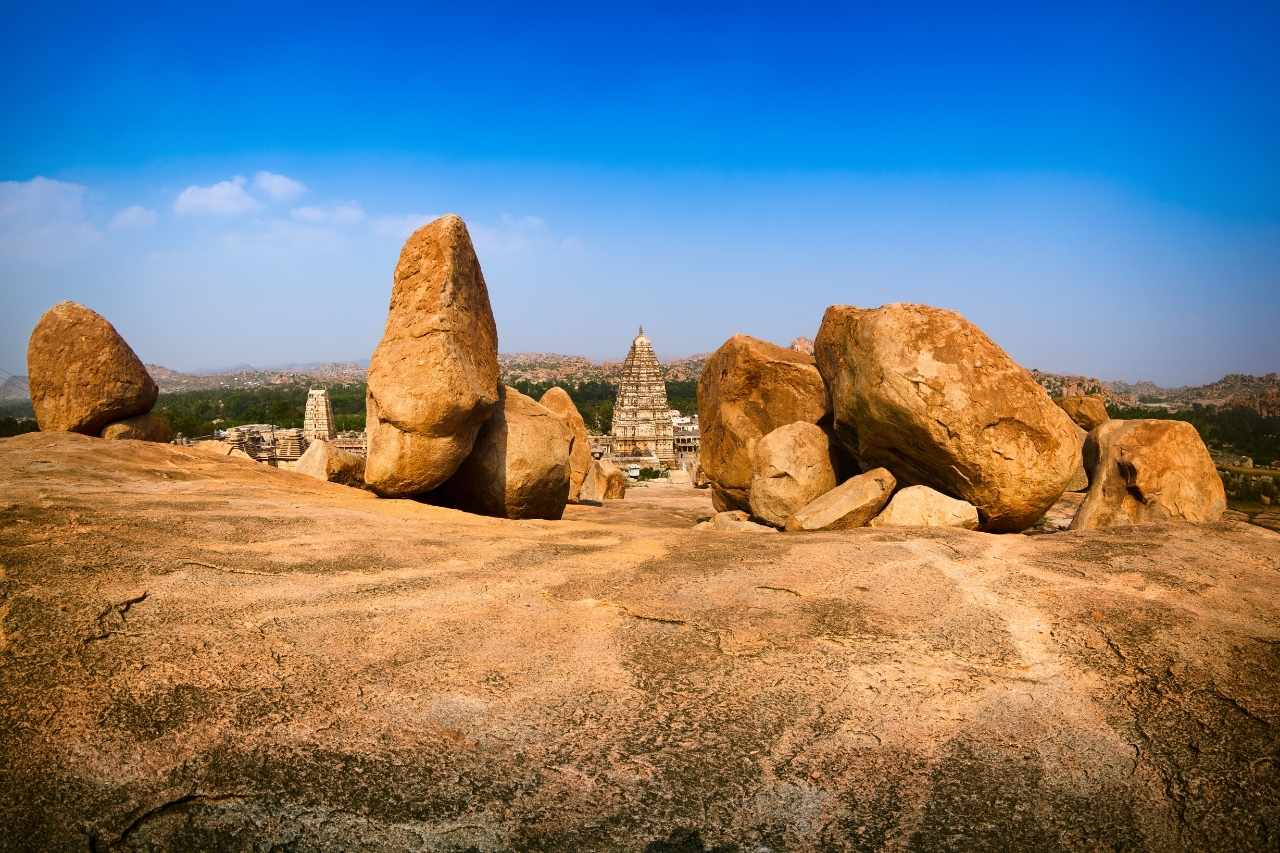
Hemakuta Hill is one of the top places in Hampi for trekking, sunrises and sunsets. It involves a 15-minute-long hike to the top. Once you reach the plateau above, you can explore the many temples and pavilions here. Don’t forget to relish the mesmerizing landscape of Hampi from here. After coming down, you can also visit the Sri Krishna Temple, Sasivekalu Ganesha, Badavalinga and the 6.7 meter high monolith of Lakshminarasimha Swamy situated nearby.
Timings: Sunrise to sunset
Entry: Free
Required time: 1-2 hours
Location: Google maps
Did You Know?
It is believed that Lord Shiva and Goddess Parvati’s wedding took place at Hemakuta Hill, amidst a shower of gold from the sky. This is why the hill is named Hemakuta, meaning gold.
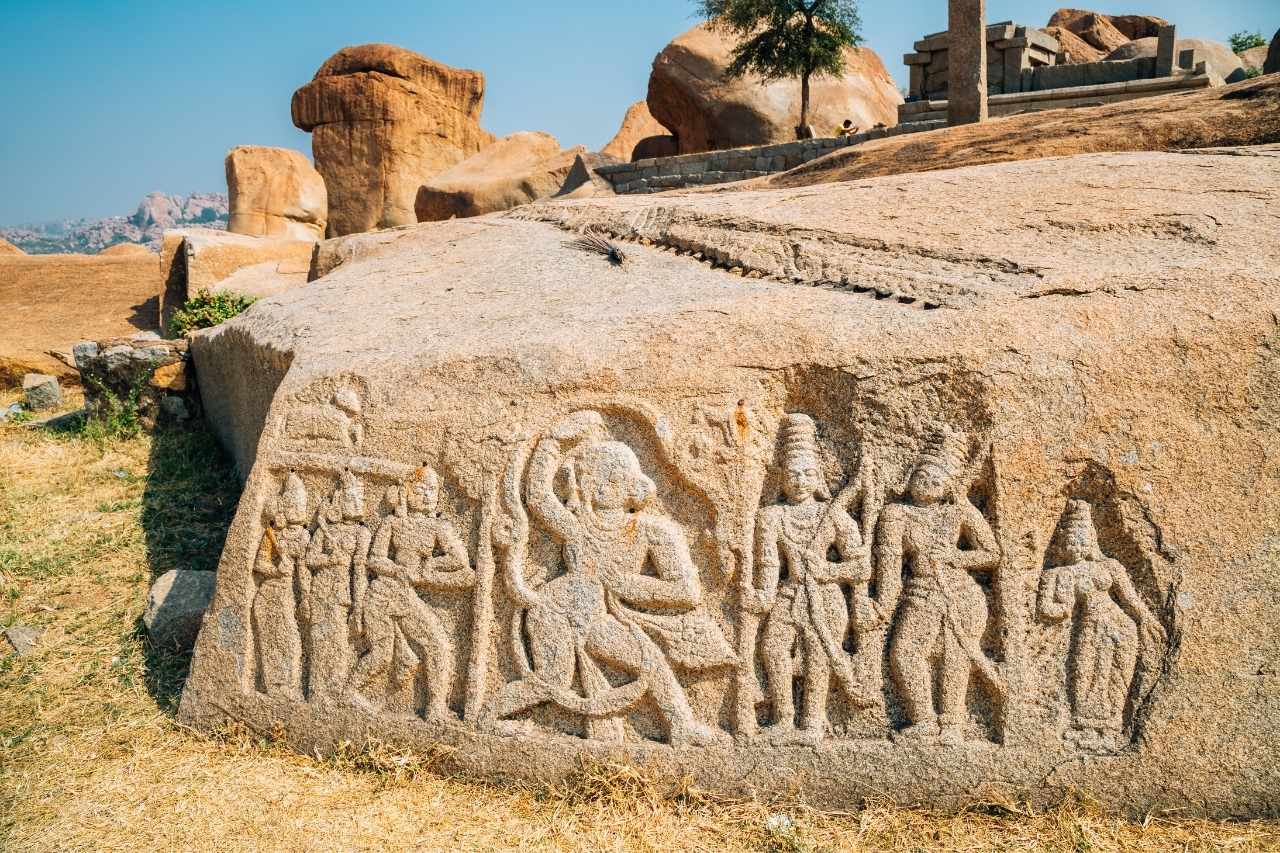
- Archeological Museum
A must-visit for history buffs, Hampi’s Archaeological Museum houses important artifacts from the Vijayanagara era, which were excavated by the Archeological Survey of India (ASI). You will find miniature models of Hampi’s topography, coins, sculptures of Hindu gods, brass documents and photographs recovered from Hampi and Anegundi.
Timings: 10 AM to 5 PM (closed on Fridays)
Entry: INR 5
Required time: 30 minutes
Location: Google maps
TWT Trivia: ASI has restored several antiques in recent years that you will find in the museum and royal enclosure. Some of the excavated objects include Buddhist sculptures that date back to the 2nd century AD, utensils, stucco sculptures, terracotta & stone artifacts from the Vijayanagara time.
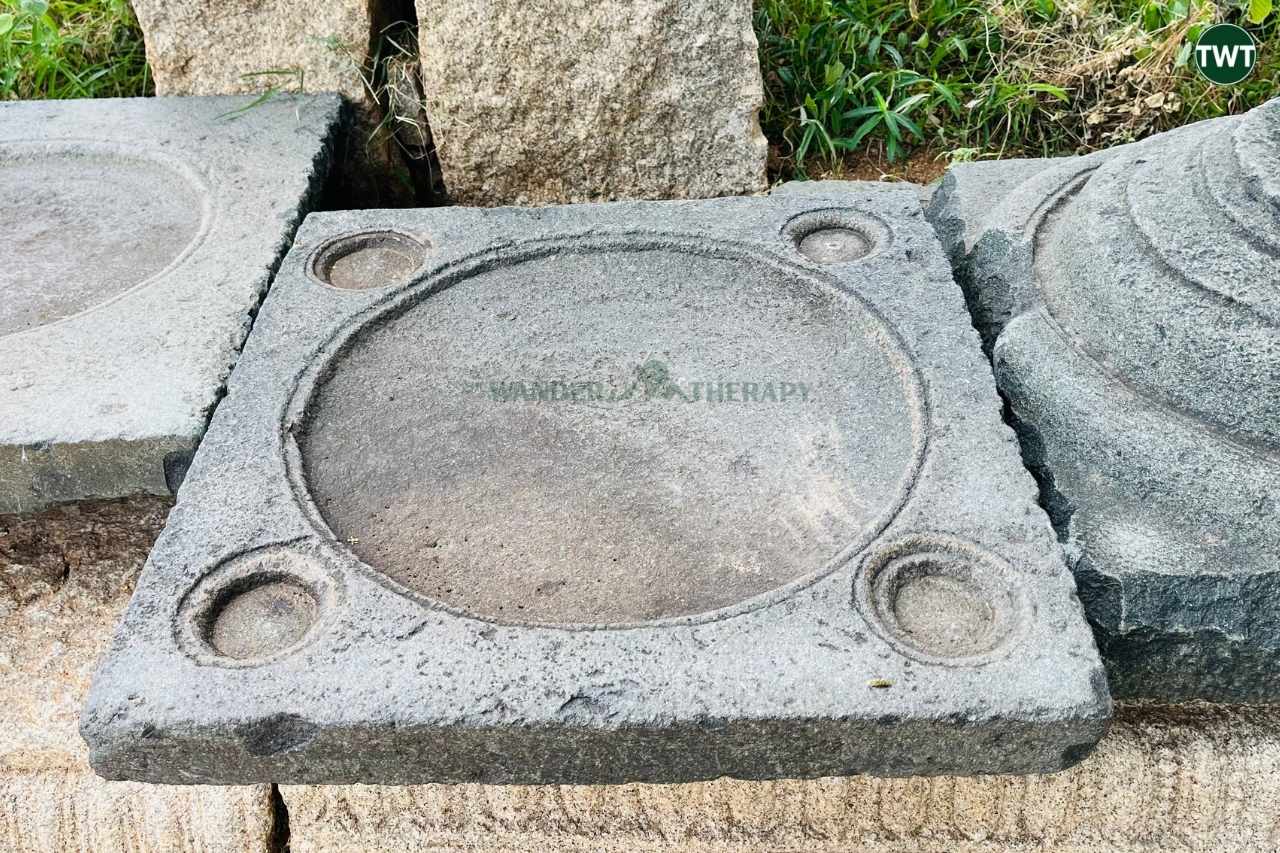
- Daroji Bear Sanctuary
Though not a part of Hampi’s history, the Daroji Bear Sanctuary is worth a visit for animal lovers who enjoy watching wildlife thriving in their natural habitats. Spread across a whopping 5,587 hectares, the sanctuary is home to around 150 Indian sloth bears, who have been living in the surrounding hillocks and forests for years.
If you’re lucky, you will also be able to sight peacocks, leopards, wild boars, hyenas and other animals during the 2-hour-long jungle safari, which includes viewing from designated watchtowers through binoculars. A naturalist guide accompanies every safari jeep, making the experience all the more insightful.
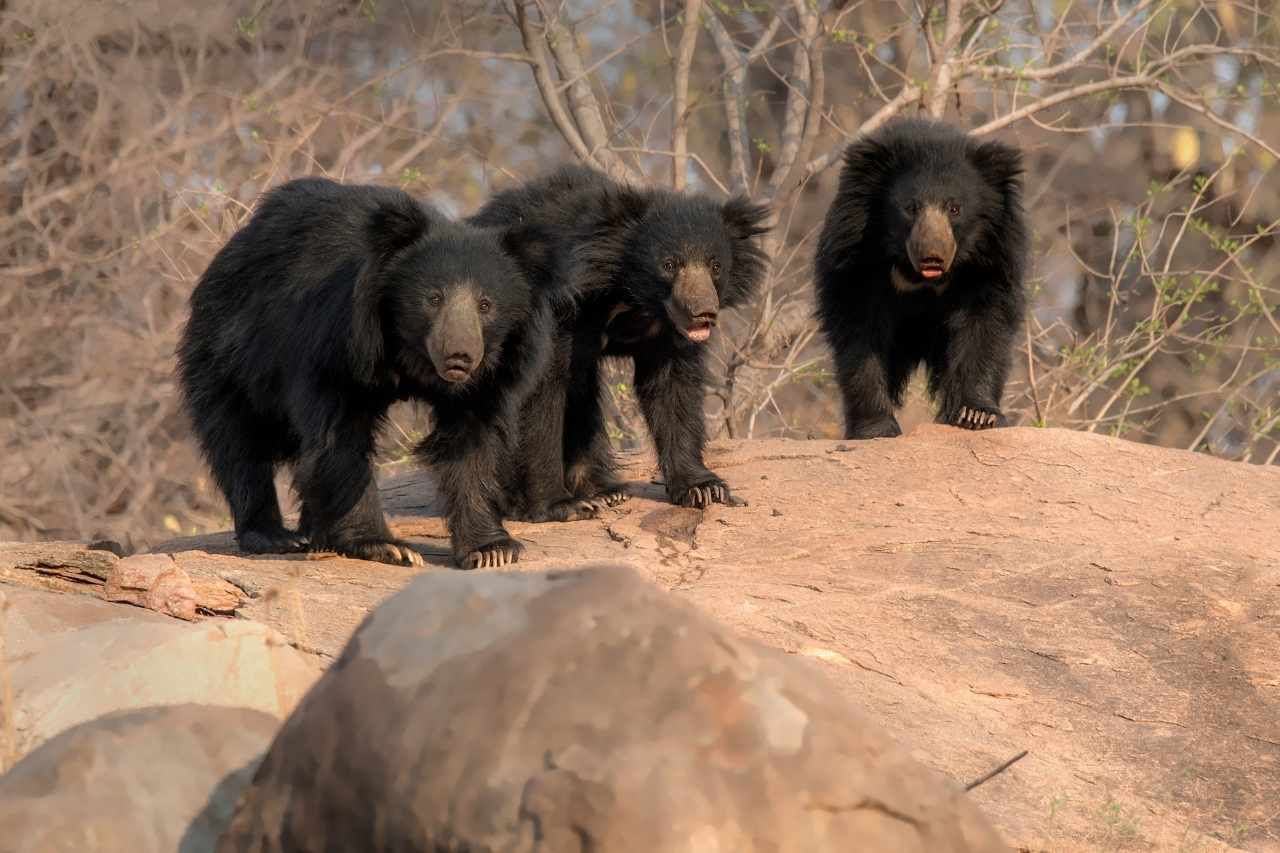
TWT Tip: If you’re a wildlife photography enthusiast and wish to capture the bears’ pictures from close proximity, you will be allowed inside the feeding area where huts are designated especially for photographers. You will be charged INR 300-1000 depending on the size of your camera. You can also carry your own binoculars, if you wish to watch the large variety of birds that live here. Always wear earthy/green colored clothes that blend in with the jungle’s colors whenever you visit any wildlife sanctuary.
Timings: 1 PM to 5 PM
Price of safari: INR 2000 per jeep (maximum 8 people)
Required time: 2 hours
Location: Google maps
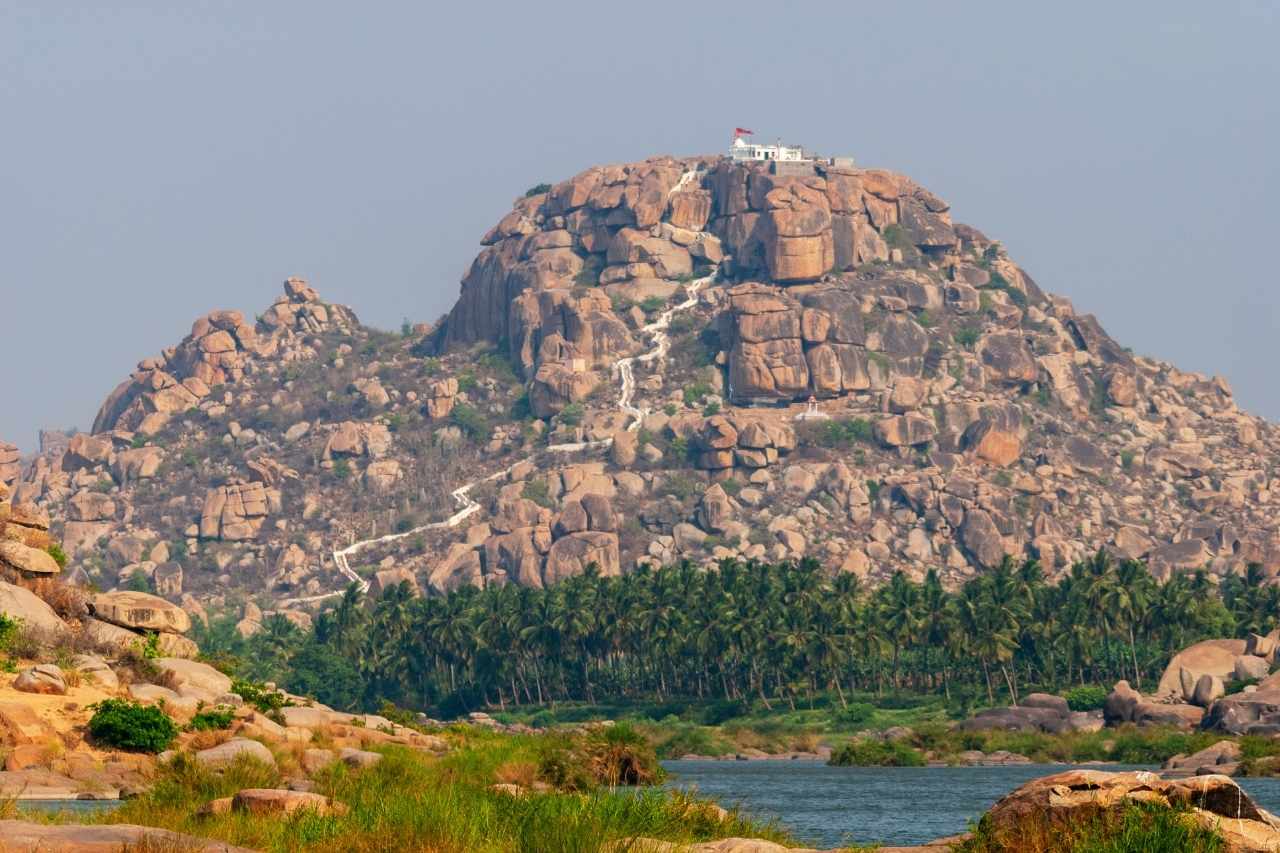
Note: On the outskirts of Hampi, you can also visit the ancient town of Anegundi, Sanapur Lake and Anjanadri Hill (believed to be the birthplace of Lord Hanuman). We have not listed the Elephant Stables near Lotus Mahal as a silent protest against how elephants were kept in captivity here.
Looking for accommodations? Reserve your stay at one of the top hotels in Hampi!
Best Accommodations In Hampi
Hampi has a wide variety of stays that cater to all kinds of budgets. These include budget hostels, mid-range lodges as well as luxury hotels. We stayed at two different properties during our trip. Here are brief details about them:
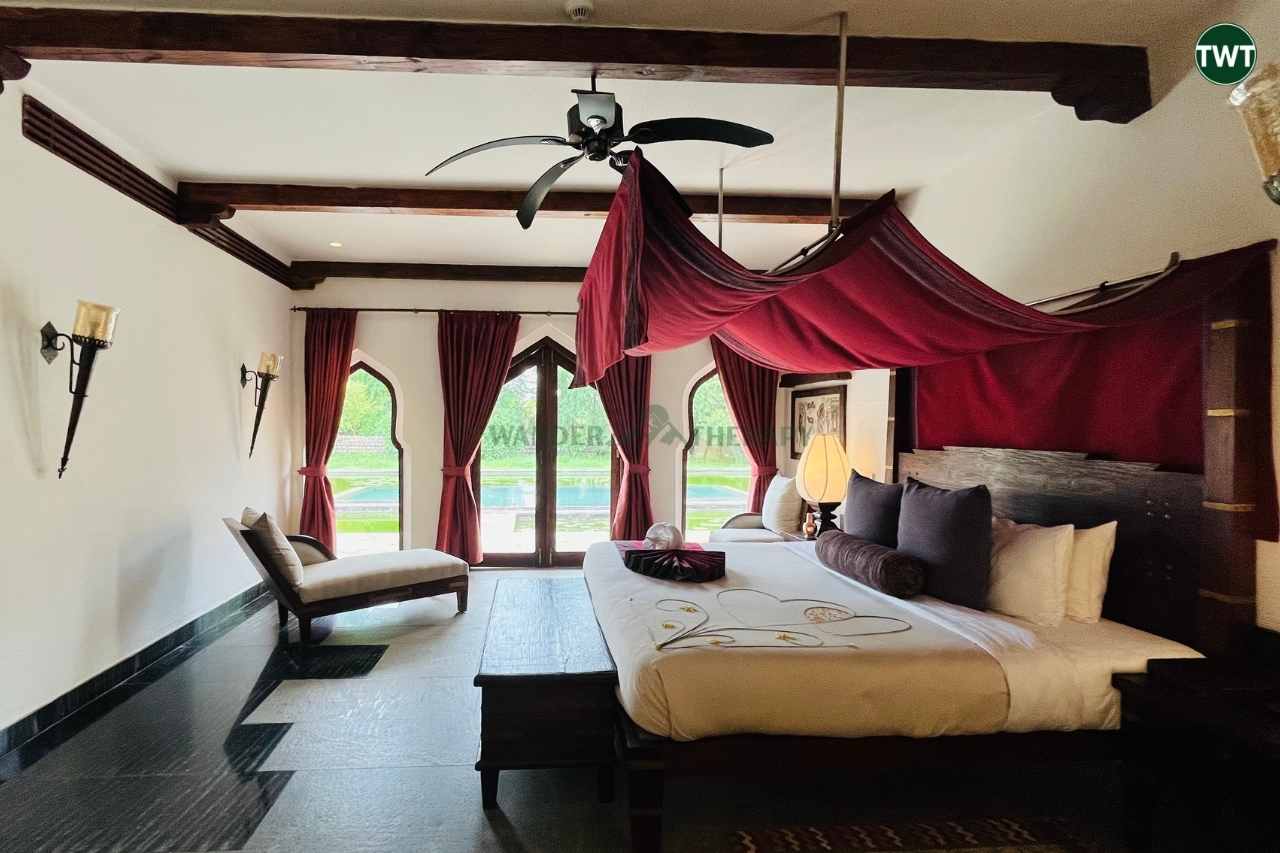
1. Evolve Back Kamalapura Palace – This is an uber luxury resort in Hampi designed as a tribute to the royal palaces of Vijayanagara kingdom. The palatial resort offers massive suites with separate in-room pools, balconies, living, dining, and bath areas. Our most memorable experiences at Evolve Back Hampi were the nature walks and bird watching experiences, guided sightseeing tours of Hampi with storytelling sessions, and the intimate dining experience at their mantapa (pavilion) overlooking their infinity pool. We were also in awe of the sustainability measures they follow across the resort, the staff’s warmth, and the stunning architecture. Book your room here!
View this post on Instagram
2. Hyatt Place Hampi – Hyatt Place Hampi is a contemporary pet-friendly hotel with dedicated plunge pools in some rooms, sprawling gardens, a book lounge, activity room, spa and gym. Their friendly and helpful staff can organize poolside candle-light dinners and travel facilities for an additional charge. They also have bicycles on the premises, swings on their serene lawns and play areas for pets and kids. Book your room here!

Here are also some other top-rated Hampi resorts, hotels and homestays where you can choose to stay:
- Hampi’s Feathers Resort
- WelcomHeritage Shivavilas Palace
- Wanderlust Hampi
- Heritage Resort Hampi
- Hampi’s Boulders Resort
- Hampi’s Whiskers Resort
- Stay Chill Hampi
- Vijayshree Resort
- Spykee Spot
- Lakshmi Heritage Tourist Home
- Hampi Nature Cottage
Local Dishes To Try In Hampi
When you visit Hampi, you can savor the regional delicacies of north Karnataka at restaurants as well as small shacks. Here are some of the local foods to try:
- Kosambari
- Jolada Rotte
- Badane Kaayi
- Ellu Chutney
- Rice thali
- Idli
- Dosa
- Ranjaka
- Palya
- Rasam
The Right Time To Visit Hampi

Hampi experiences moderate to hot weather during most months of the year. Hampi’s temperature oscillates between 16 degrees Celsius and 38 degrees Celsius on an average.
Hence, the most ideal time to visit Hampi is the monsoon or Winter season, between July and early March. During this time, days are usually pleasantly sunny, while evenings are cooler and breezy.
Summers are not the best time to visit Hampi, as the region becomes very sultry from mid March to June.
How To Reach Hampi?
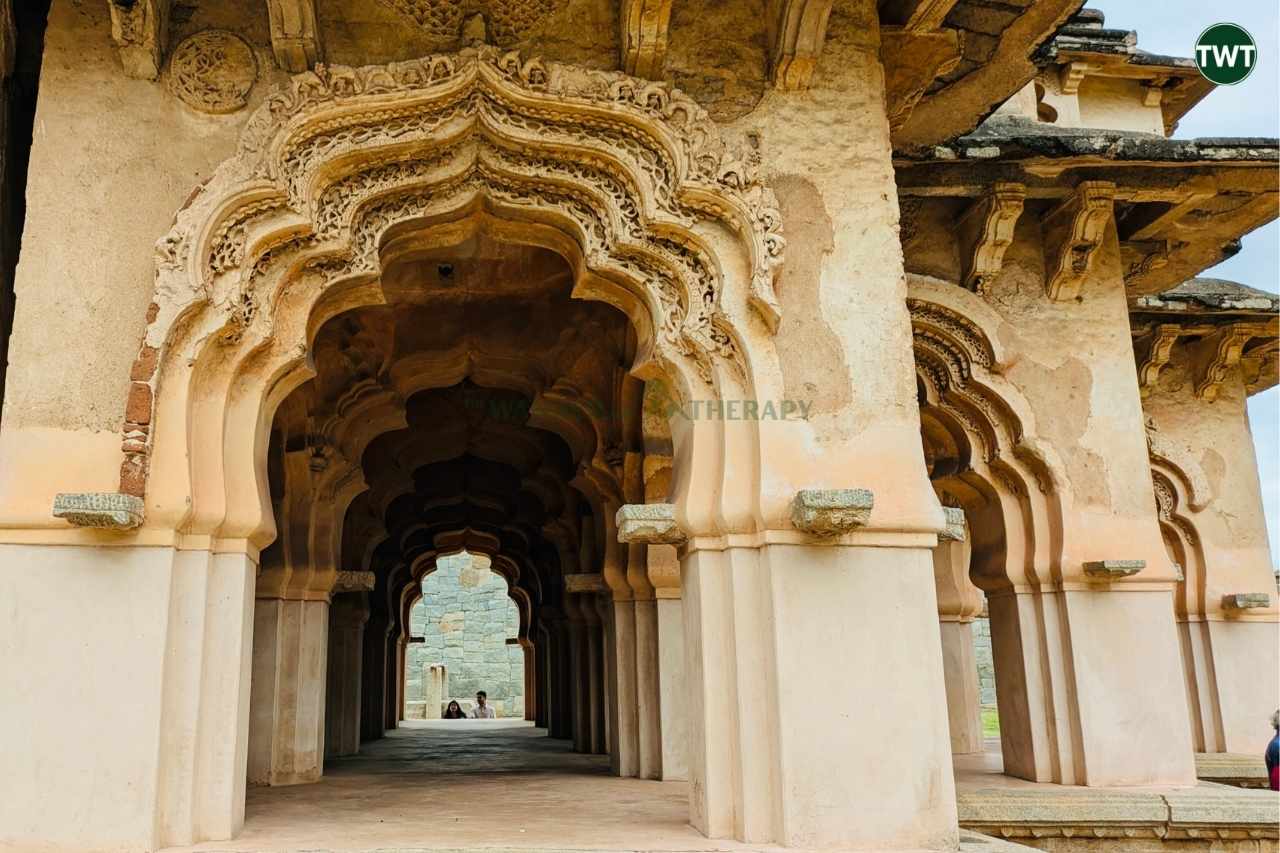
Hampi is located just a 6-hour-drive away from Bangalore and an 8-hour-drive away from Hyderabad. Thus, most people traveling from these cities prefer to take a road trip, on their own vehicle or a bus.
However, Hampi is also well connected through air and rail, with the nearest airport in Vidyanagar (Vijaynagar Airport) and closest railway stations in Hospet and Bellary. You can alight at any of these points and take a taxi or local bus to Hampi.
3-Day Itinerary: Things To Do In Hampi
There are umpteen number of things to do in Hampi — from treks to historical trails, coracle rides to temple visits, and wildlife sightings to museum visits. Thus, it’s important to follow an itinerary, so that you don’t miss out on the best sightseeing spots, especially those that form the core of Hampi.
We’ve got you covered with a 3-day Hampi itinerary, which will help you plan your trip:
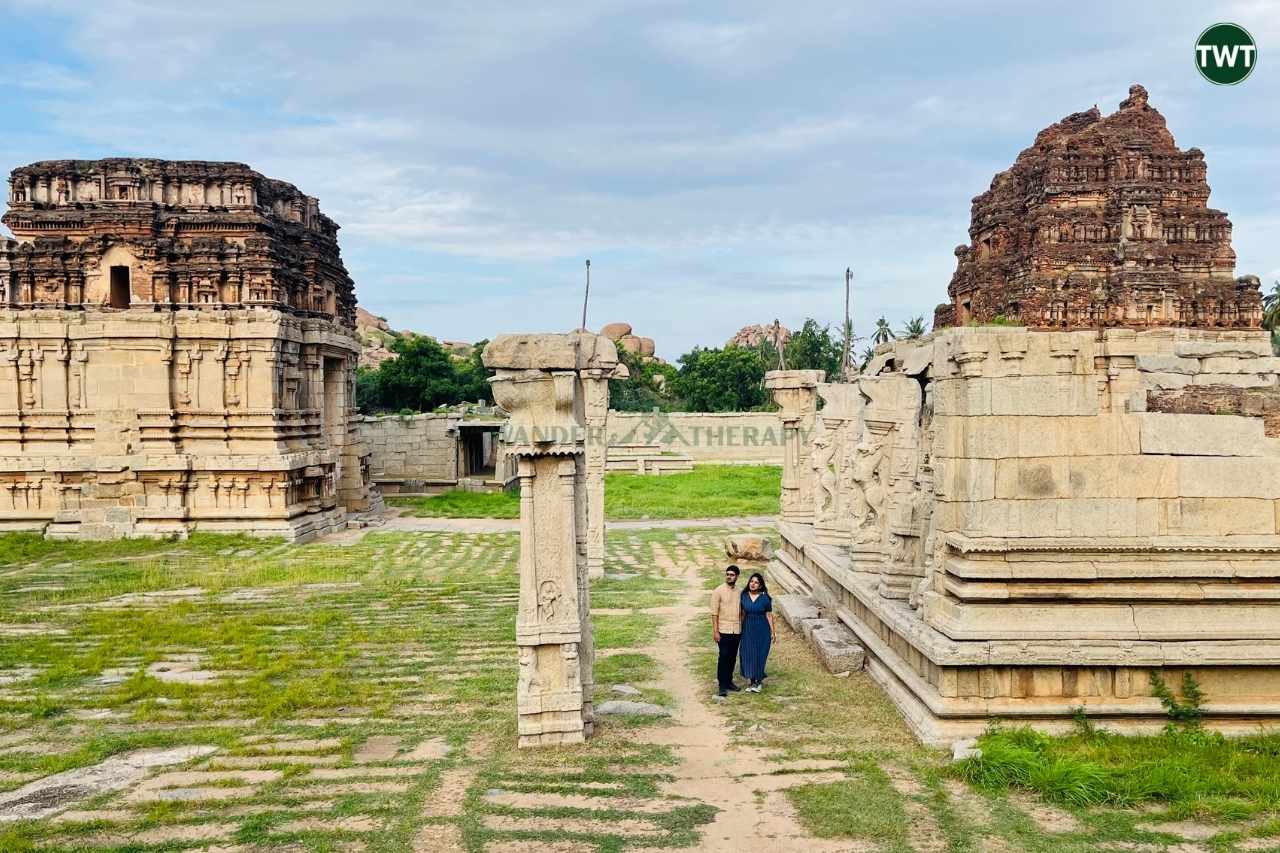
Day 1
- Start your Hampi sightseeing with a visit to the royal enclosure, where the Vijayanagara empire resided once upon a time. Check out the Mahanavami Dibba, secret underground chambers, pushkarini and the remains of palaces.
- Then take a short drive or walk to the Hazara Rama Temple to admire its unreal artistic beauty.
- Next, go to the Lotus Mahal (located nearby) and shoot some stunning photographs here.
- Finish this trail by visiting the Queen’s Bath, a gorgeous structure that was once used as a tank by the royal women.
- Post lunch break, visit the archeological museum by around 4 PM to see fascinating objects from the Vijayanagara era that were excavated by ASI.
- Retire for the day by sunset.
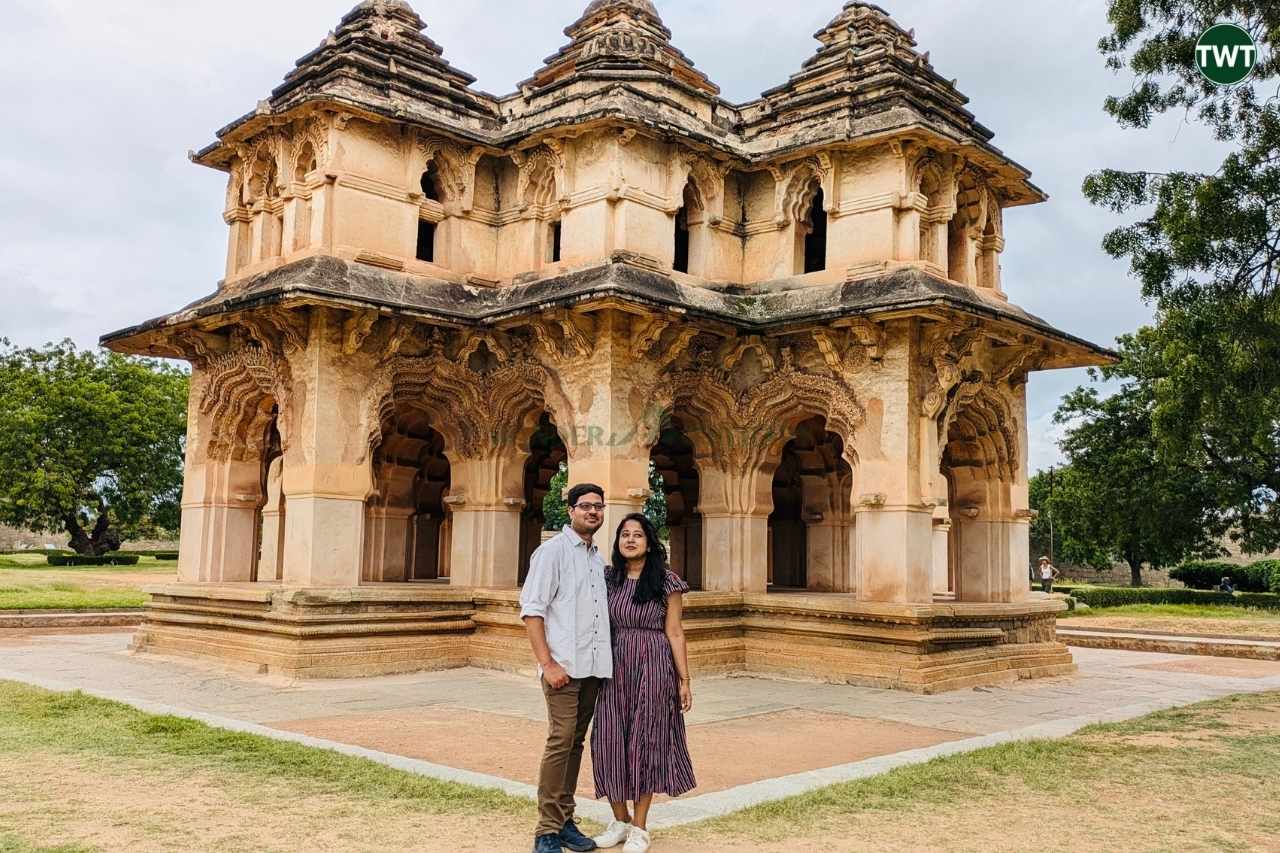
Day 2
- Begin your second day early in the morning with the Tungabhadra trek, which starts at the parking area of Matanga Hill. See the Hampi bazaar and Nandi monolith before hiking up.
- Stop at the Achyutaraya Temple to admire its breathtaking architecture.
- Next, visit the stunning Pushkarini, situated at a walkable distance from the temple.
- End your trek at the banks of the Tungabhadra river, where you can go for a thrilling coracle ride, one of the most popular things to do in Hampi.
- After coming back to the parking area, go to the Virupaksha Temple. This is the only functioning temple among the ancient group of temples where you can offer prayers.
- After breakfast, visit the iconic Vijaya Vittala Temple, just a few kilometers away. This temple houses the famous stone chariot of Hampi.
- Rest till afternoon and then visit the Daroji Bear Sanctuary at 4 PM. You can easily spend 2 hours here and then go back to your hotel.
Day 3
- Hike up to the Hemakuta Hill early in the morning and enjoy a beautiful sunrise.
- When you are done relaxing and soaking in the views, visit the Shiva temples and ruins of the ancient pavilions.
- Once you go back to the bottom of the hill, have breakfast and cover Sasivekalu Ganesha, Badavalinga, Lakshminarasimha Swamy statue and Sri Krishna Temple.
- Post lunch, visit the Monkey Temple in Anjanadri or Anjaneya Hill (birthplace of lord Hanuman as per local beliefs).
- If you have more time in hand, you can also visit Sanapur Lake and Anegundi on the outskirts.
Warning: Many people participate in cliff jumping at the Sanapur Lake. However, sign boards placed by the government indicate that the lake is home to crocodiles. If you still want to try the activity, it’s crucial to check weather conditions and make sure that you do it under the guidance of trained professionals.
View this post on Instagram
TWT Experience Summary Of Hampi
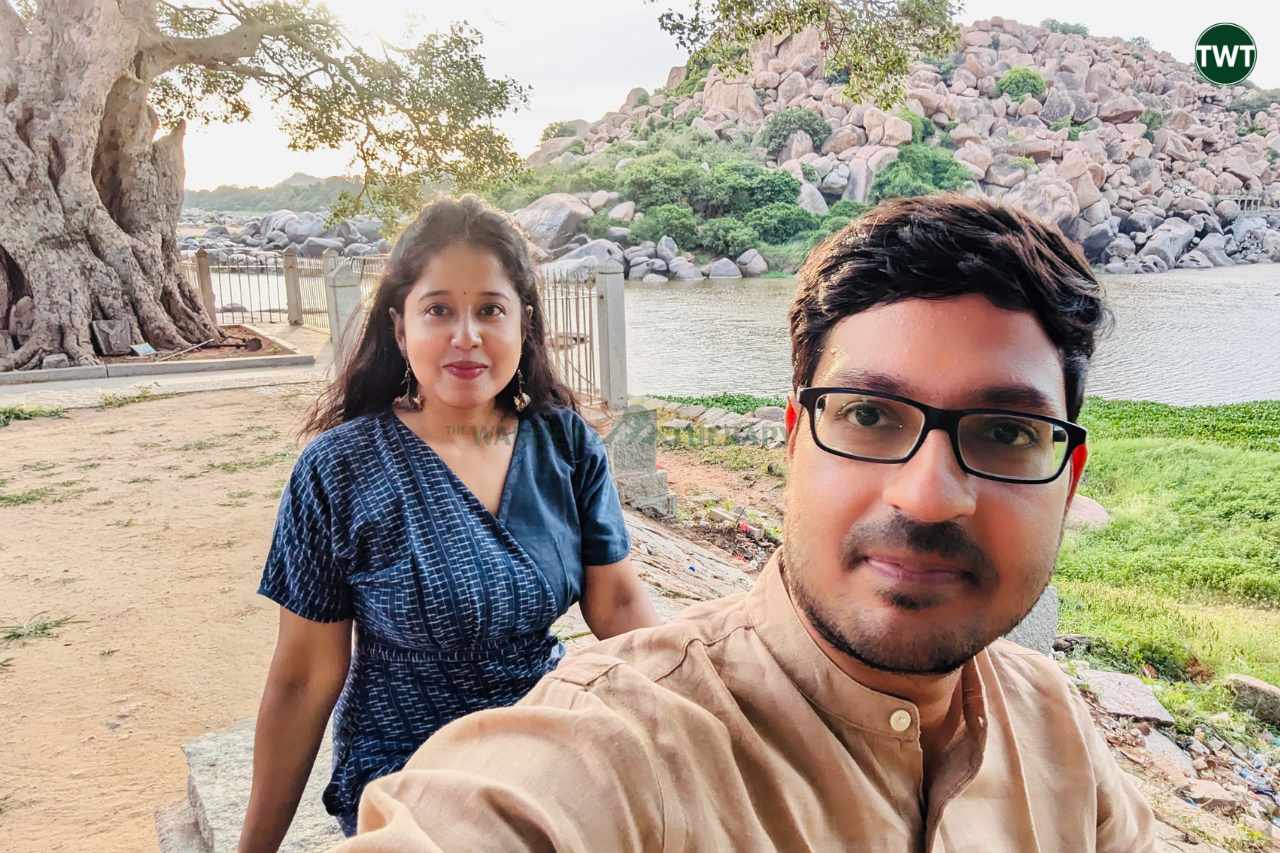
The UNESCO World Heritage Site of Hampi can virtually transport you back to the heydays of south India’s past, when the Vijayanagara empire ruled over several parts of the region. Art, culture and craftsmanship were at their glorious best, which is evident when you walk through the remains of their capital city.
Although the town eventually stood witness to the downfall of the Vijayanagara kingdom, the sheer splendor of their royal structures, such as Lotus Mahal, Queen’s Bath and Mahanavami Dibba will leave you mesmerized even today! Their temples, like Hazara Rama, Achyutaraya, Vijaya Vittala (stone chariot) and Virupaksha, will further establish the intricate craftsmanship of those times and the place’s connection with Hindu mythology.
There are also enough places for the adventure seekers and nature lovers, such as Daroji Bear Sanctuary for animal sightings, Tungabhadra River for coracle rides, and Matanga Hill and Hemakuta Hill for trekking enthusiasts. Altogether, Hampi boasts of India’s rich heritage that every traveler should witness at least once in their lifetime.
Frequently Asked Questions About Hampi
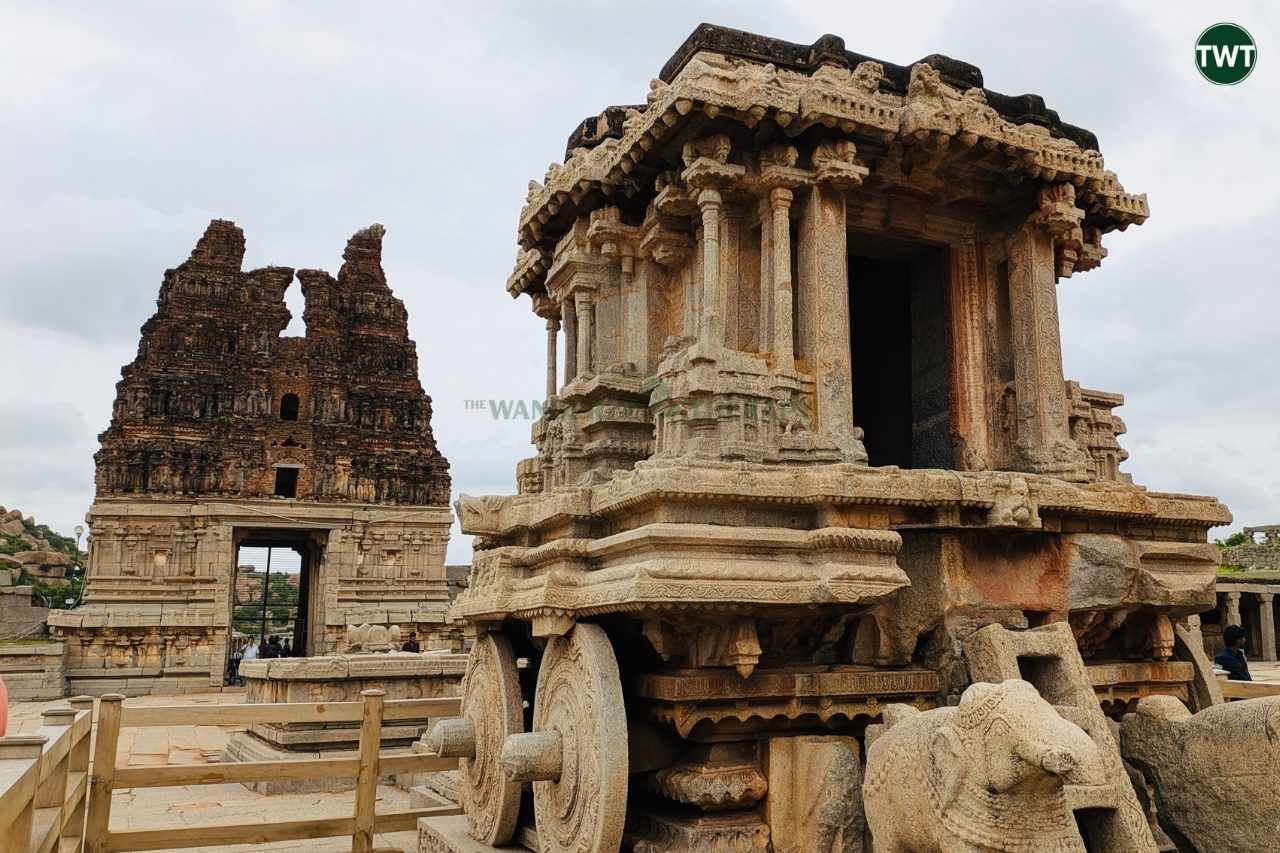
- What is the best way to travel from Hyderabad to Hampi?
You can either choose to get on a bus or train to Hospet and then take a taxi/local bus to Hampi. There is also a short flight available from Hyderabad to Vijaynagar airport, located around 30 minutes away from the main town of Hampi. You can also self-drive or take a taxi from Hyderabad and reach Hampi within 8 hours. However, we recommend taking the longer Bellary route rather than the shorter Raichur route, as the roads are better and safer on the former.
- What are the top things to do in Hampi with family in 1 day?
Considering you start the day early in the morning, you can begin with a trek and sunrise view from Matanga Hills. After coming down, visit the Achyutaraya Temple, go for a coracle ride in the Tungabhadra River, and then see the Hampi Bazaar, Virupaksha Temple and Vijaya Vittala Temple. Post lunch, go to the Royal Enclosure area, where you can view the ruins of Vijayanagara palaces, Hazara Rama Temple, Lotus Mahal, and Queen’s Bath. If time permits, you can also visit the archeological museum or Daroji Bear Sanctuary.
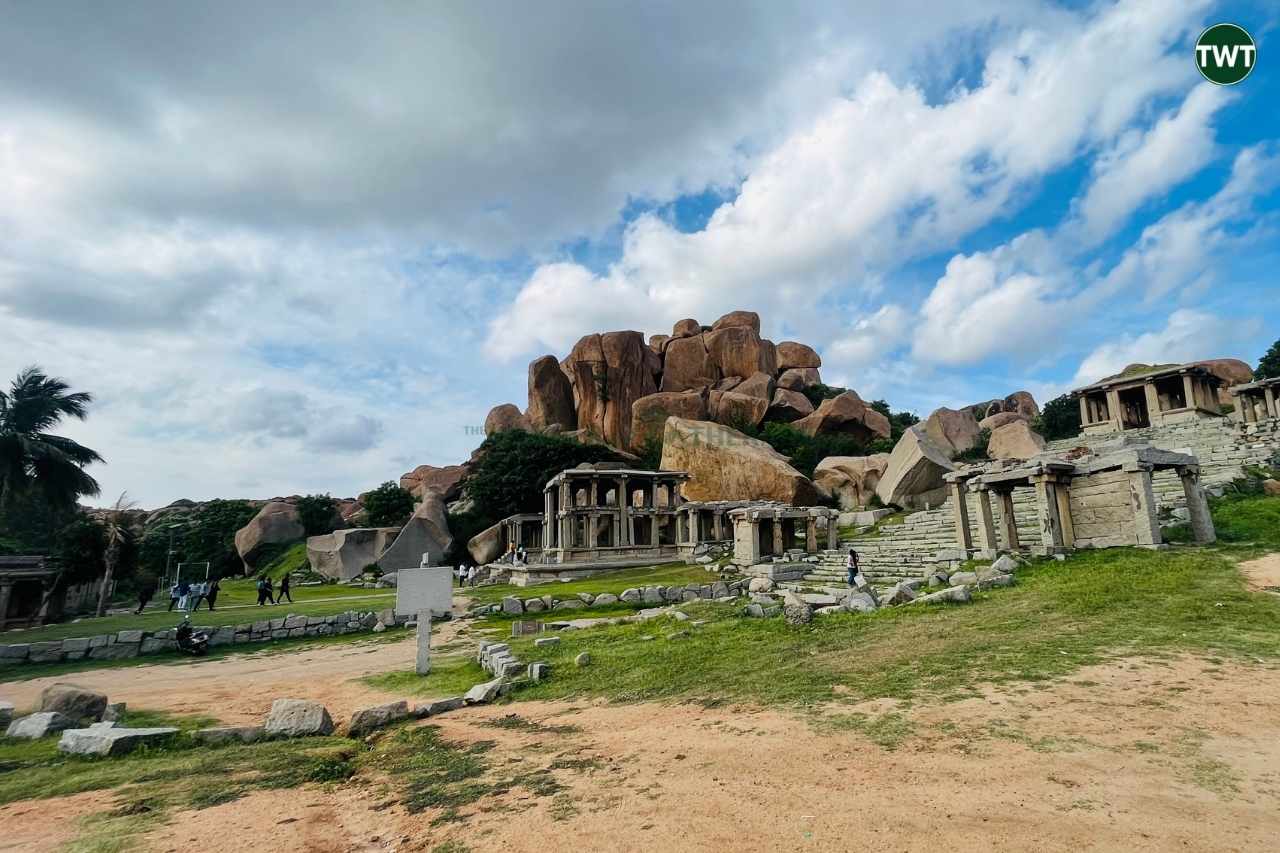
- Are there any other famous places near Hampi for a quick road trip?
Yes, Hampi is close to several heritage sites such as Aihole, Pattadakal and Badami, which you can reach within 3 hours. You can also visit Mantralayam, Kudalasangama, Dandeli and Hubli from Hampi.
- What are the best things to shop in Hampi?
Hampi’s artisans and craftsmen are known for their banana fiber works. You can shop for various accessories like bags and home decor created with banana fiber. You will also find decorative pieces crafted from stone at the markets.
- How many days are enough for a satisfying Hampi trip?
You will need at least 2-3 days if you wish to explore Hampi’s main sightseeing spots with a relaxed itinerary. However, Hampi is full of hidden historical stories, local crafts and offbeat destinations that you can explore only if you stay for a longer time.
Frequent Traveler? Here’S Some More Travel Goodness From Us:

